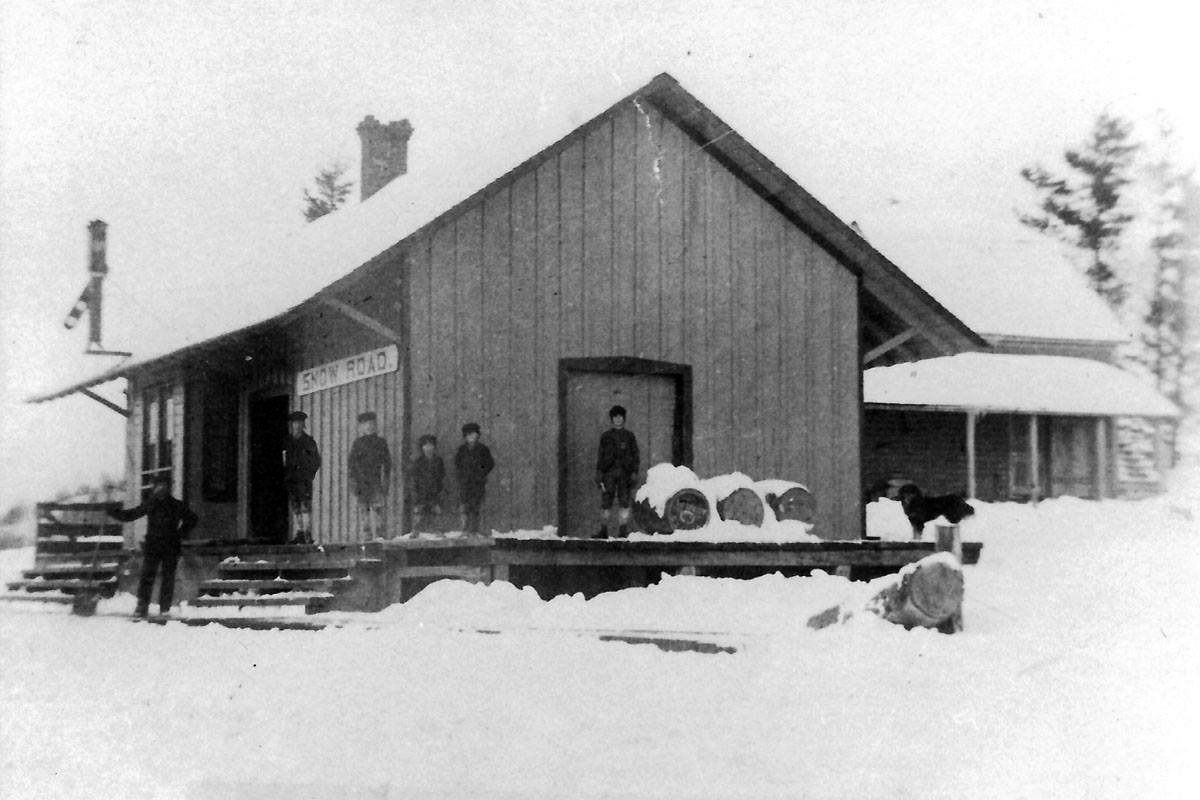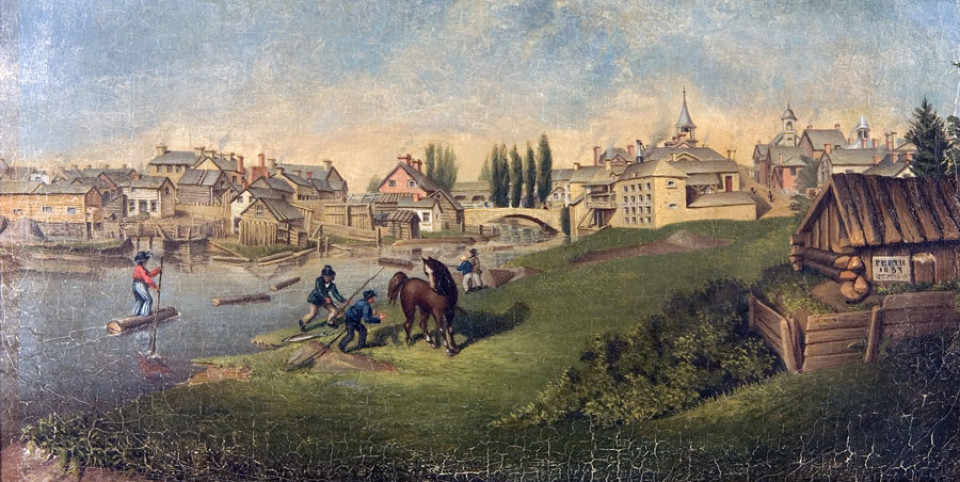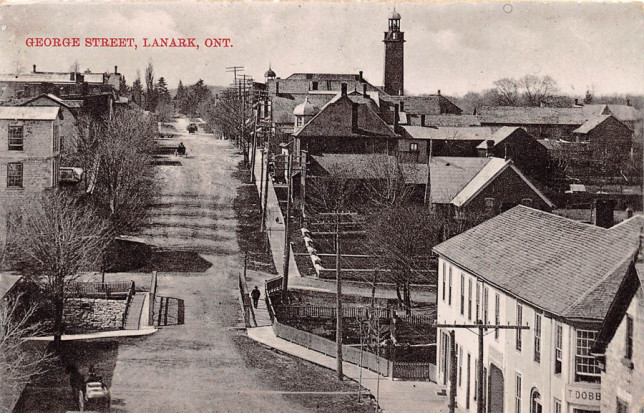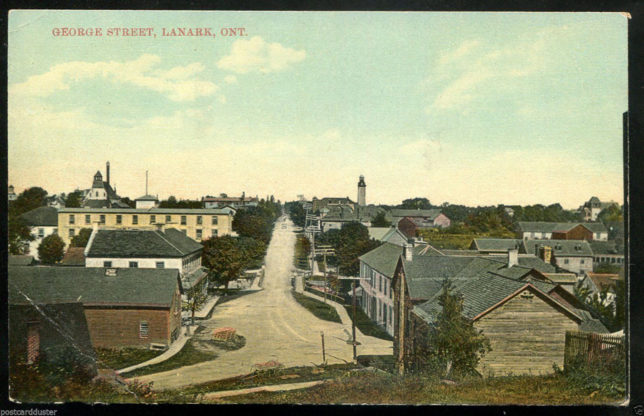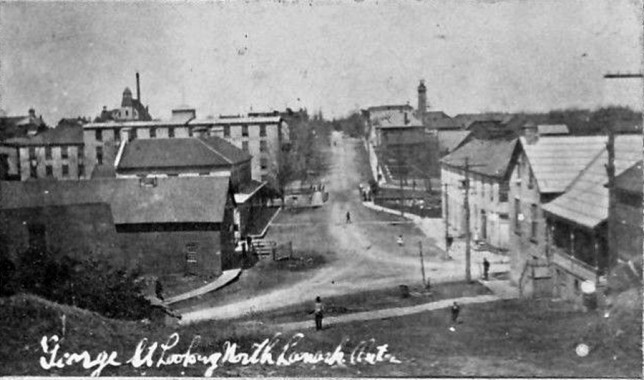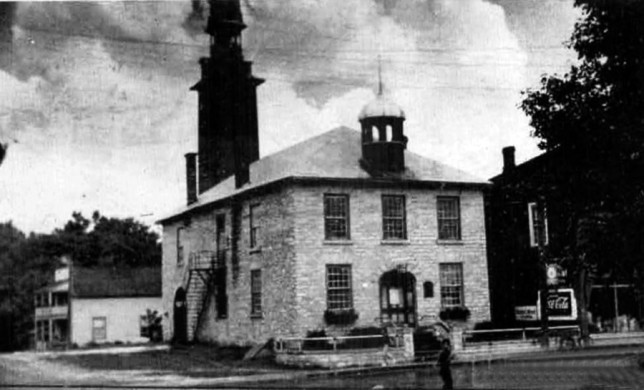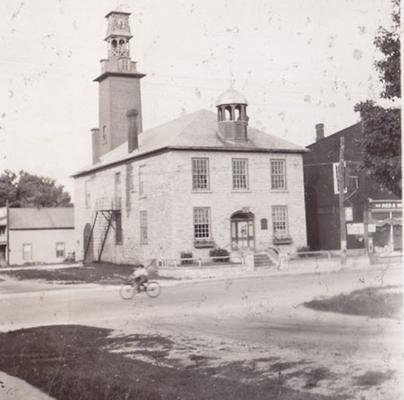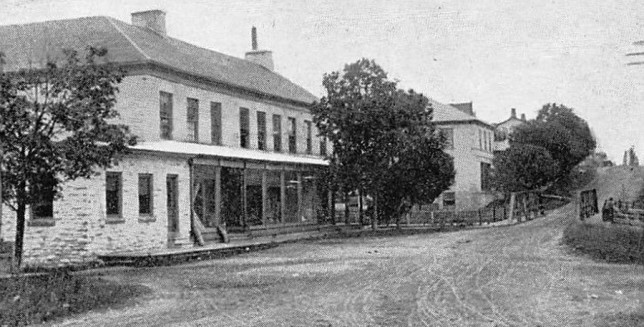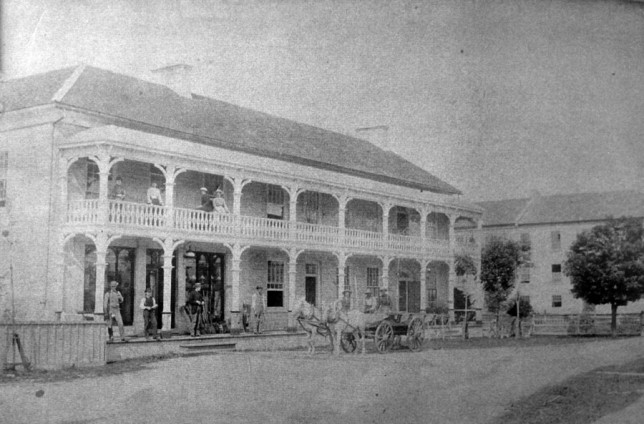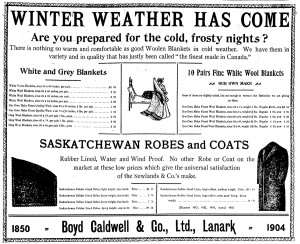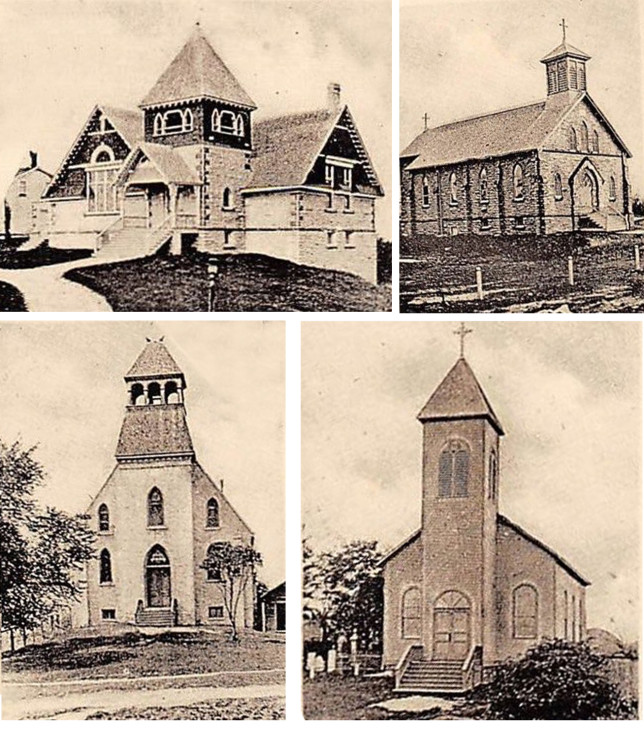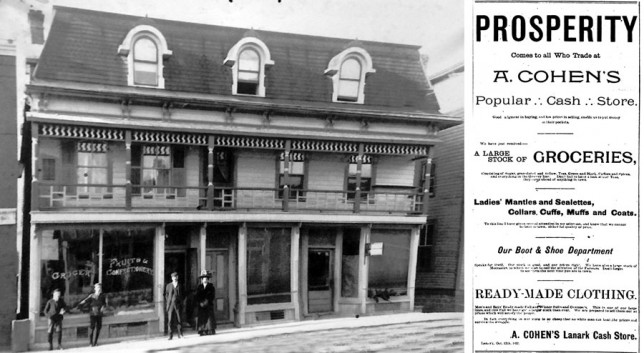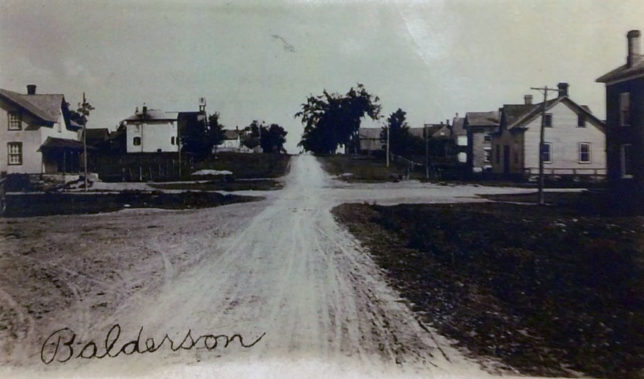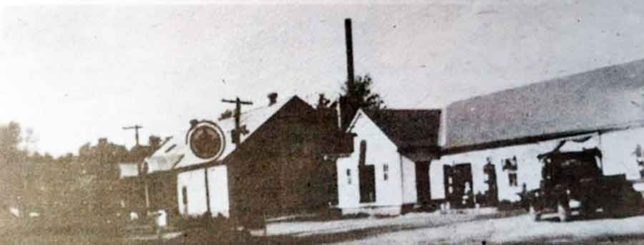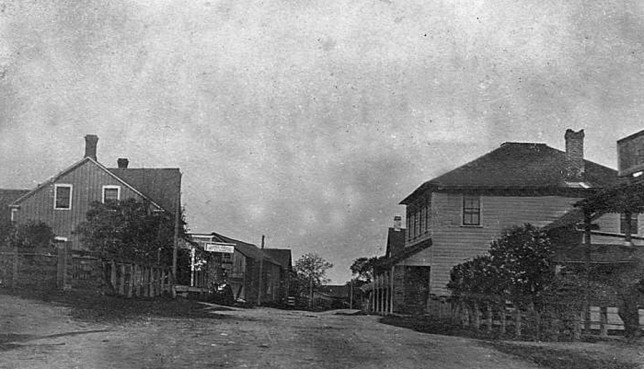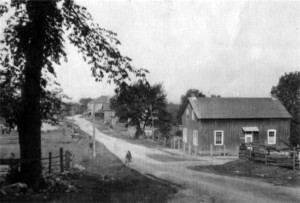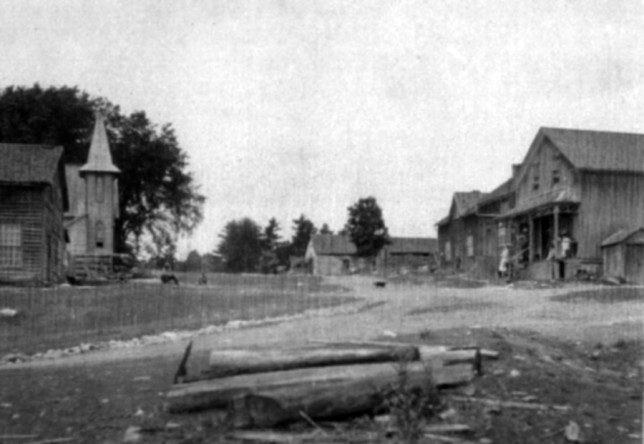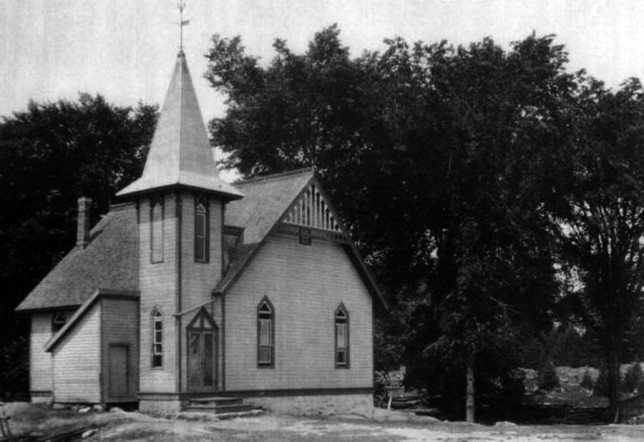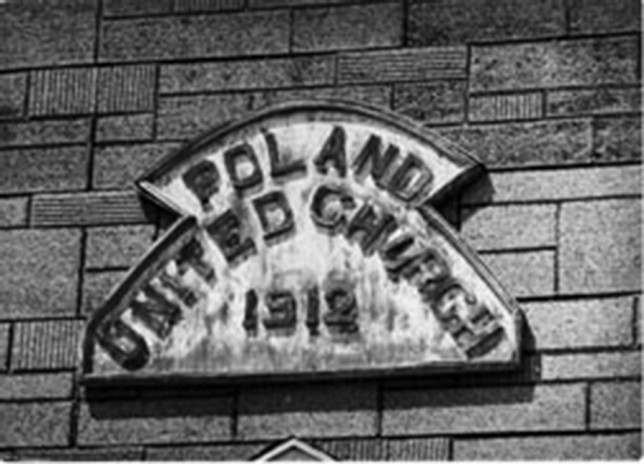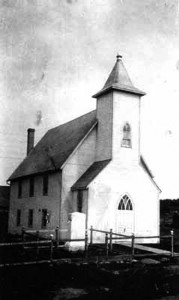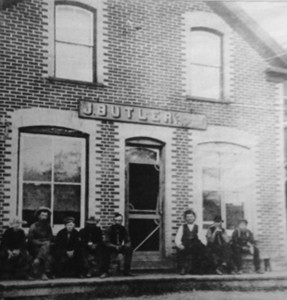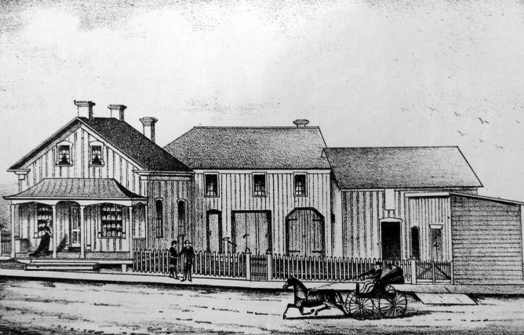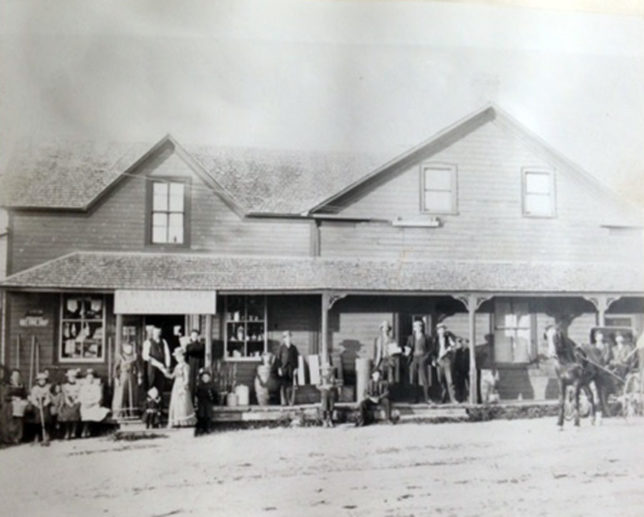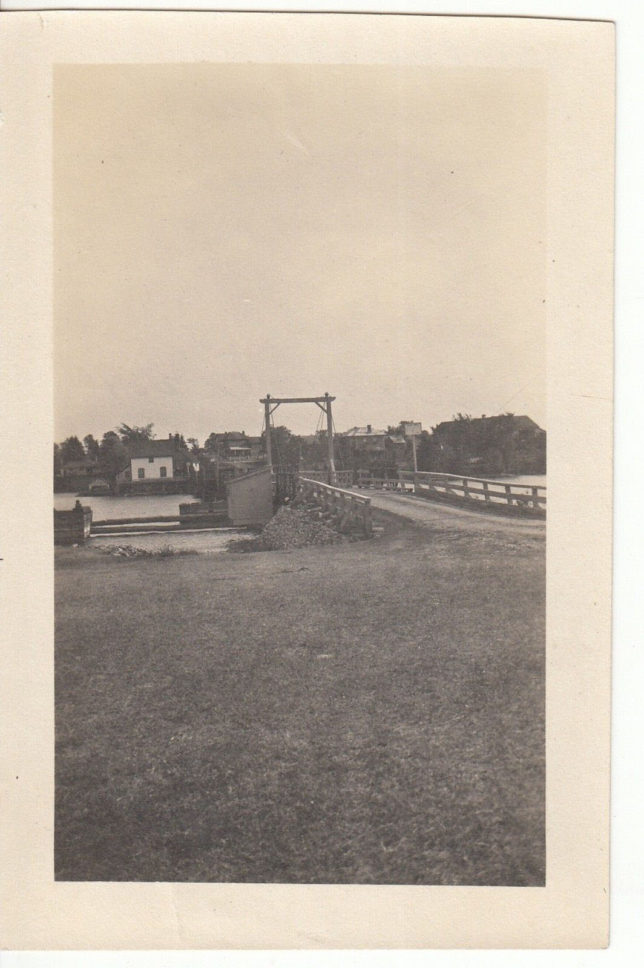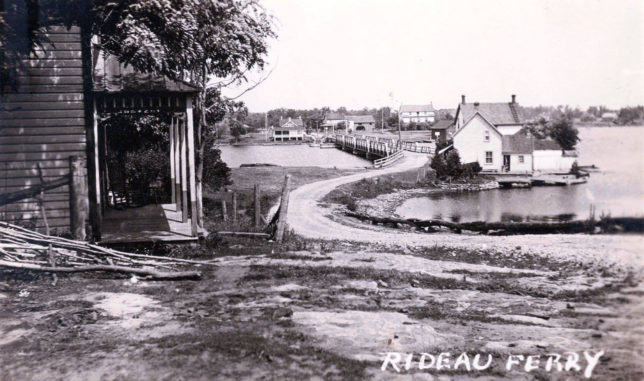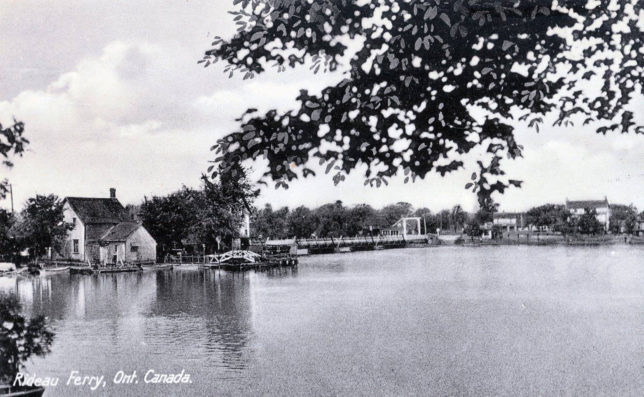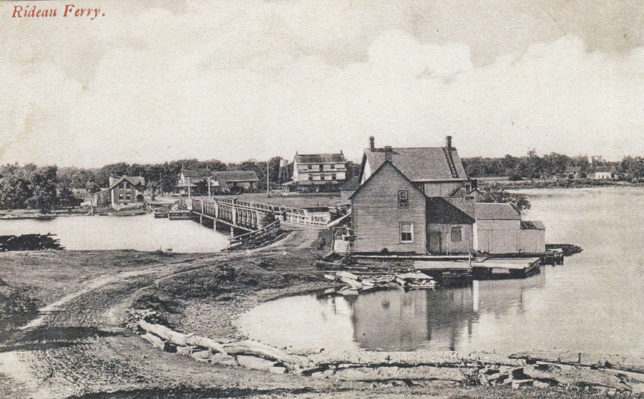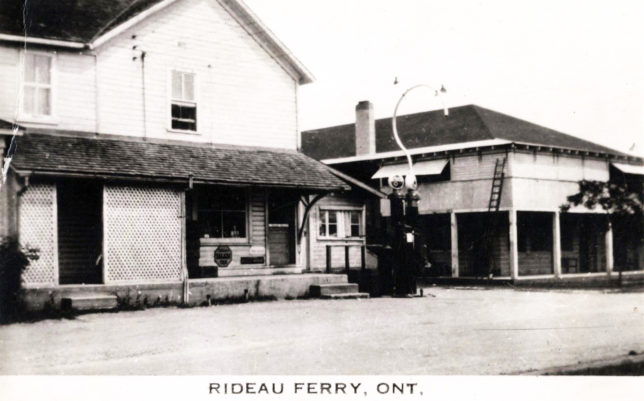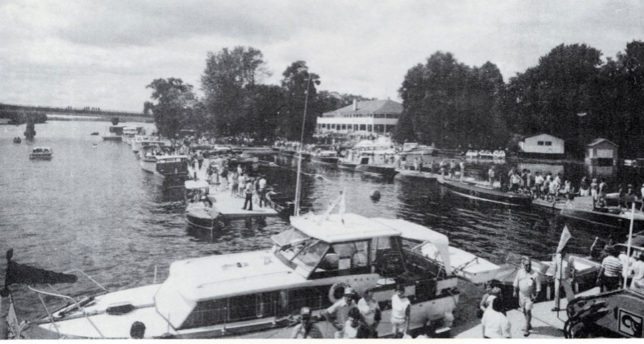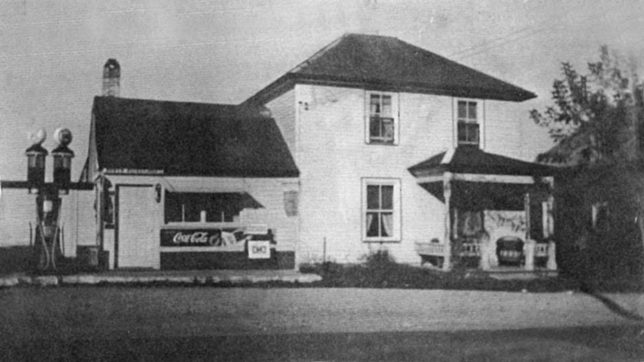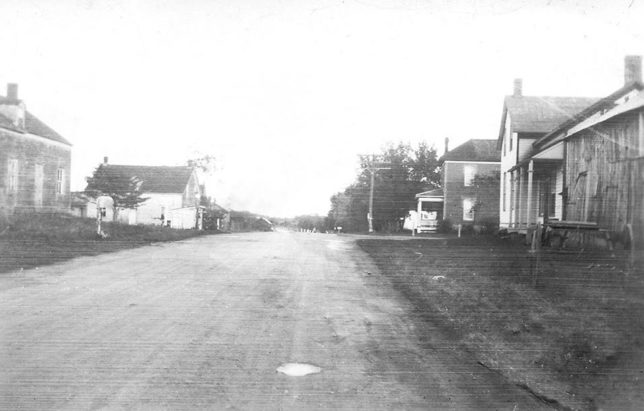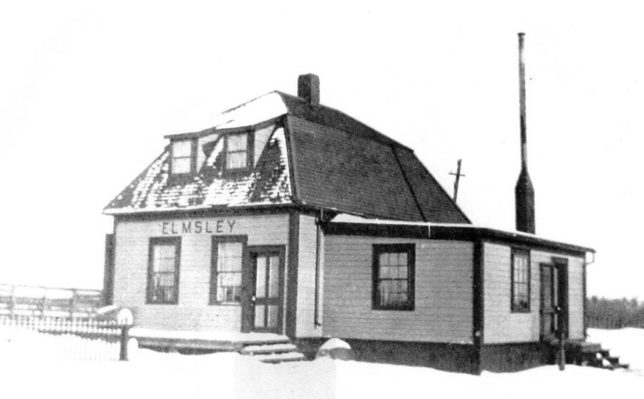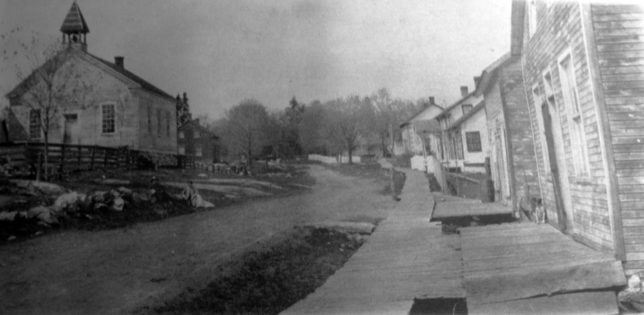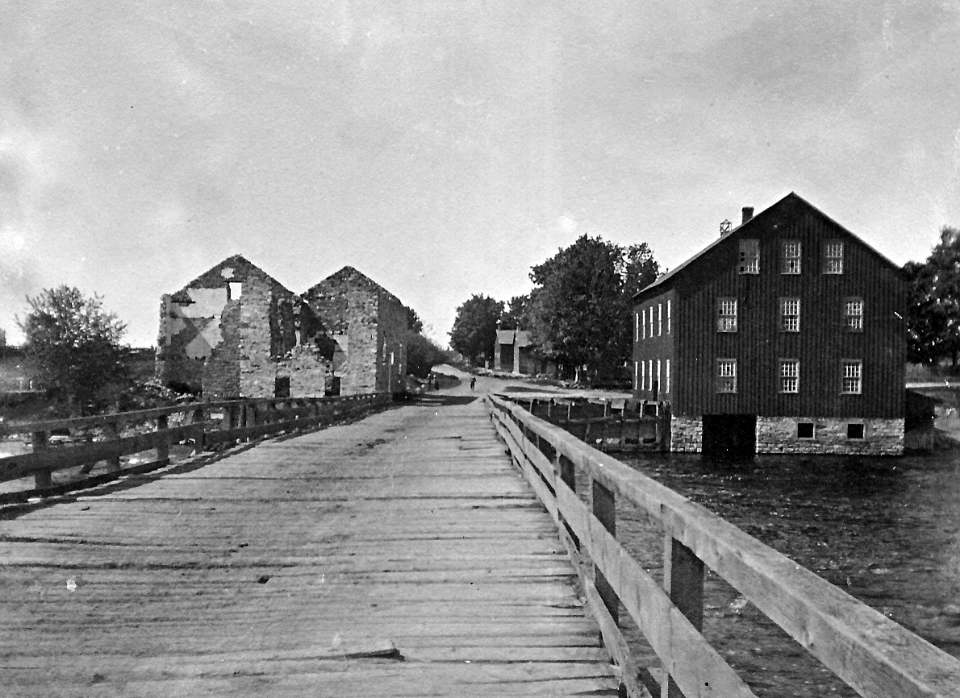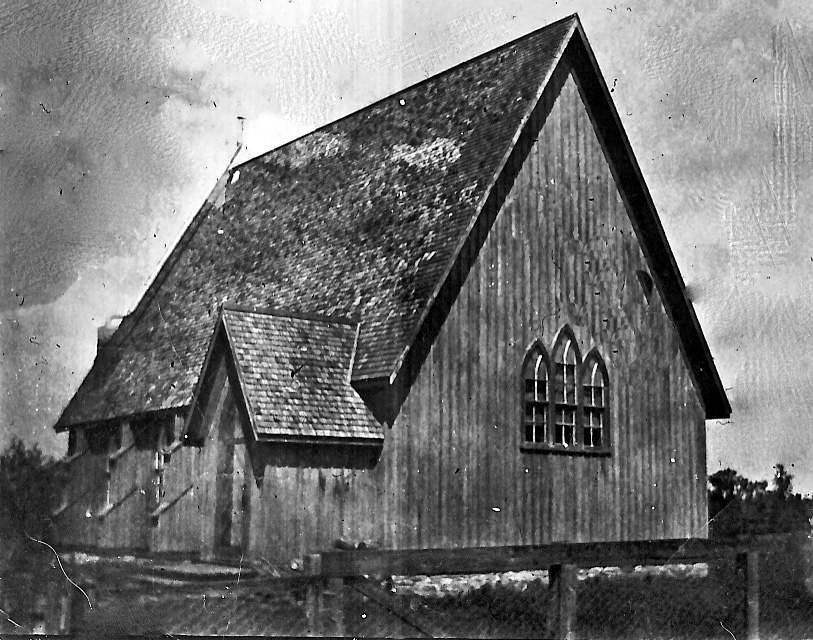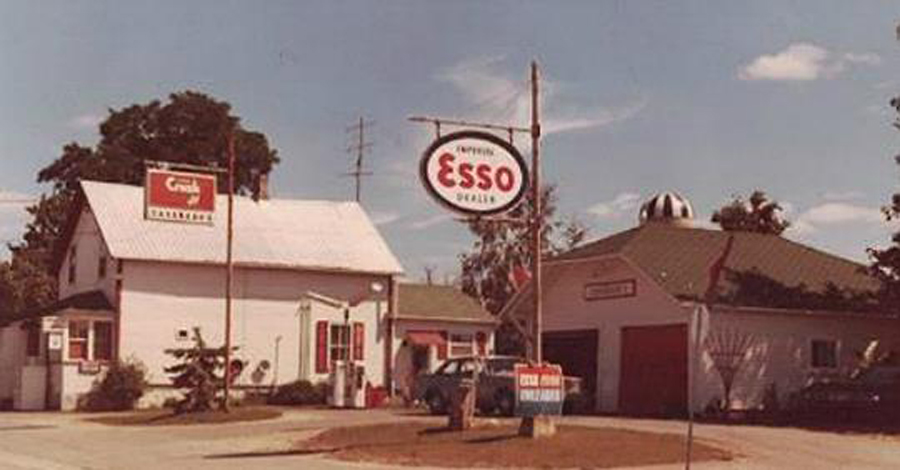LANARK/RENFREW COUNTY
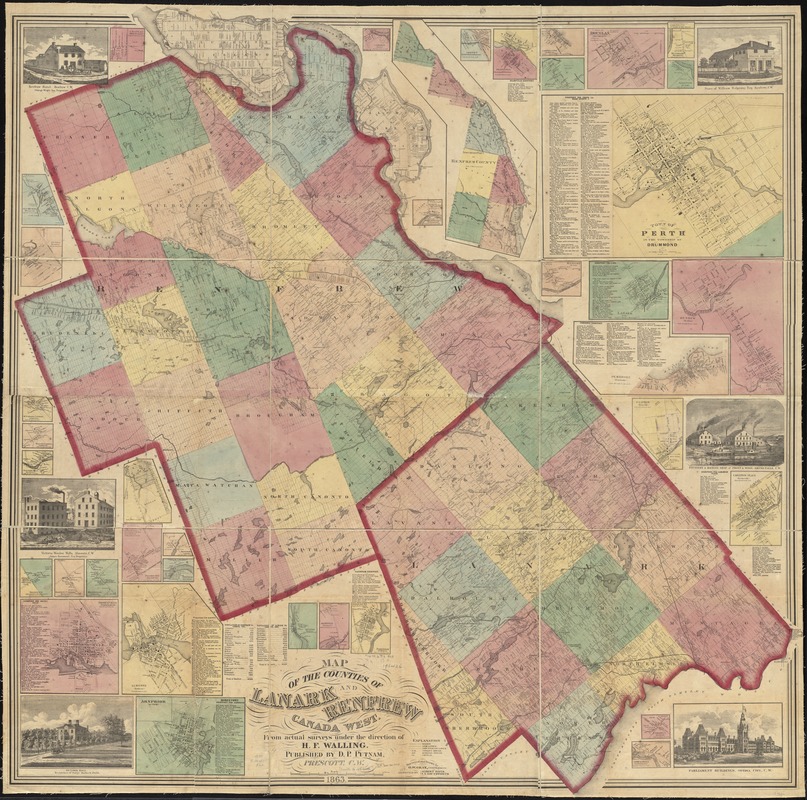
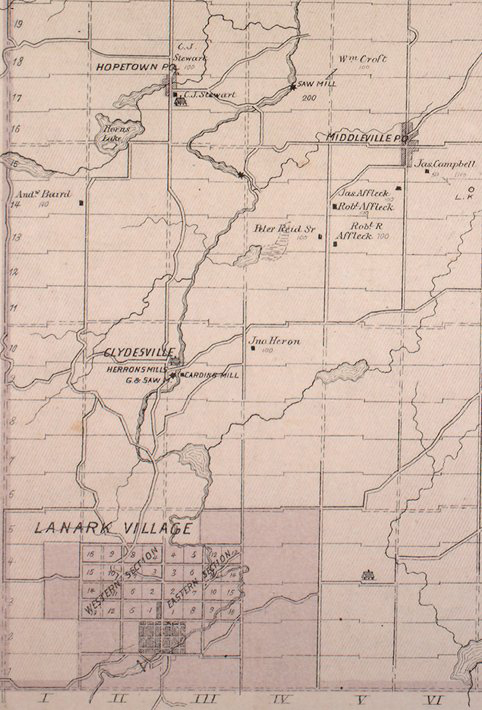
VILLAGE OF LANARK
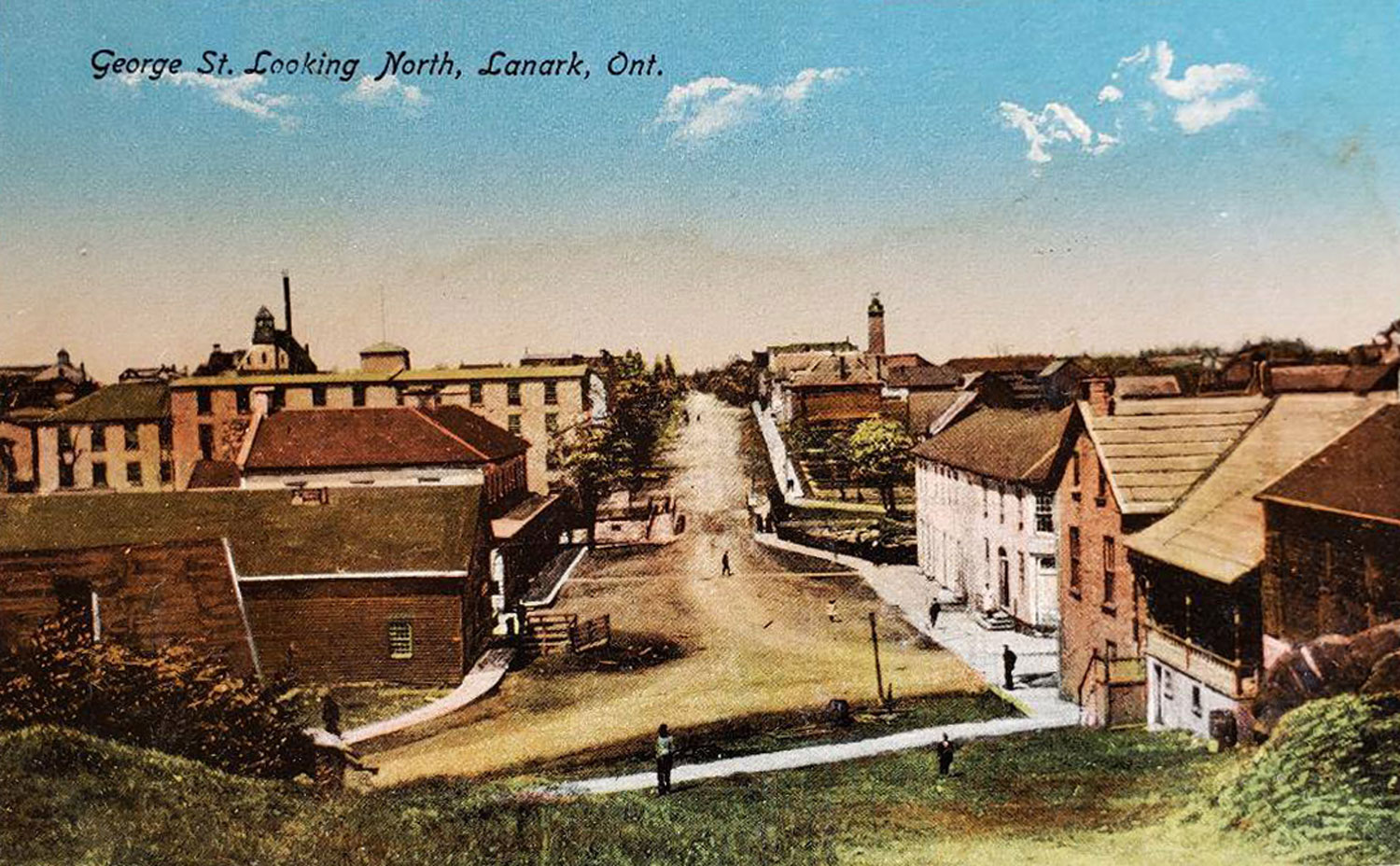 Lanark Village 1913, looking up George Street
Lanark Village 1913, looking up George Street
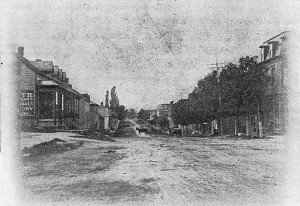 The Village of Lanark was settled by Scottish emigrants from Glasgow in 1820. Mostly Paisley weavers and spinners they left the depressed time in Scotland to seek homes in Canada. This was but a part of the great tide of emigration which, beginning at the termination of the American War of 1812-15, continued unabated for a decade. In 1820, approximately 400 families arrived in Lanark Village, bringing with them skills in cotton weaving, carpentry, blacksmithing and shoemaking. A similar influx of Irish settlers arrived during the 1830’s and 1840’s. However, the growth of the area was somewhat impeded by the muddy, rocky terrain and steep slopes, which prevented easy travel. As a result, many settlers opted to reside in Perth, unwilling to make the dangerous trek to Northern Lanark. For a more extensive historical account visit:
The Village of Lanark was settled by Scottish emigrants from Glasgow in 1820. Mostly Paisley weavers and spinners they left the depressed time in Scotland to seek homes in Canada. This was but a part of the great tide of emigration which, beginning at the termination of the American War of 1812-15, continued unabated for a decade. In 1820, approximately 400 families arrived in Lanark Village, bringing with them skills in cotton weaving, carpentry, blacksmithing and shoemaking. A similar influx of Irish settlers arrived during the 1830’s and 1840’s. However, the growth of the area was somewhat impeded by the muddy, rocky terrain and steep slopes, which prevented easy travel. As a result, many settlers opted to reside in Perth, unwilling to make the dangerous trek to Northern Lanark. For a more extensive historical account visit:
http://www.globalgenealogy.com/LCGS/articles/A-LANARK.HTM
http://www.lanarkhighlands.ca/About/History.php
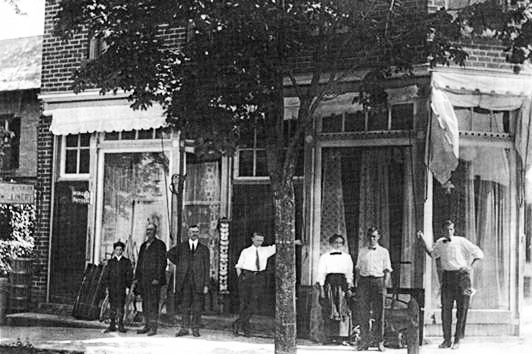
Archie McDonald’s store and Mrs. M. Cargar’s millinery shop. 1913, in Lanark. the building, three stories with an Empire-style roof, was destroyed by fire in 1959. Photograph by: Lanark & District Museum, The Ottawa Citizen
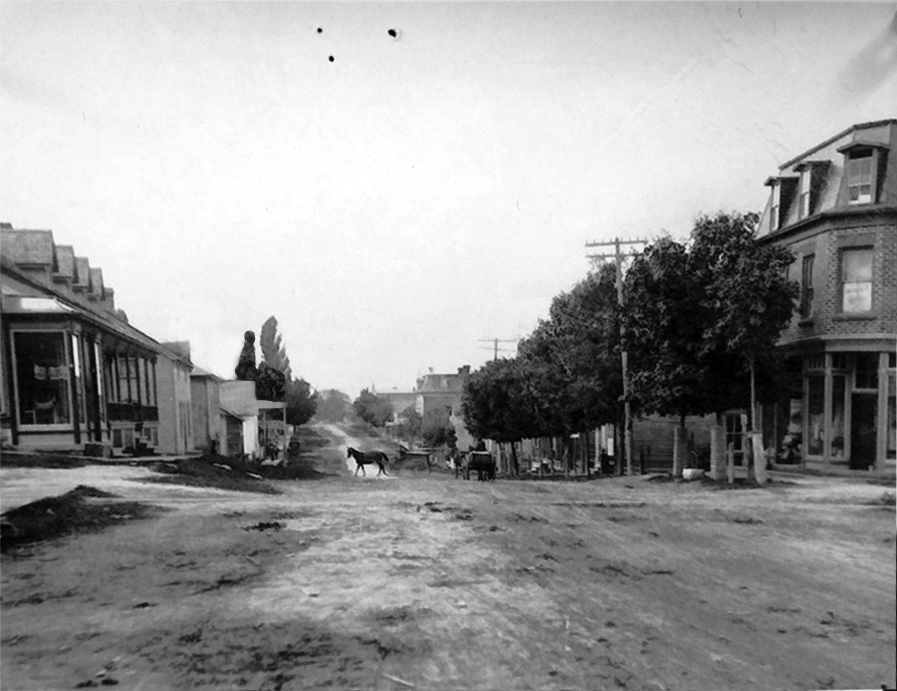
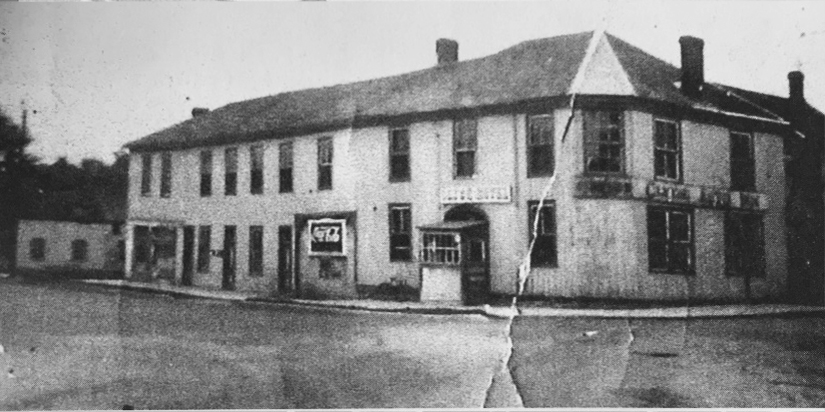
Original Clyde Hotel c.1890
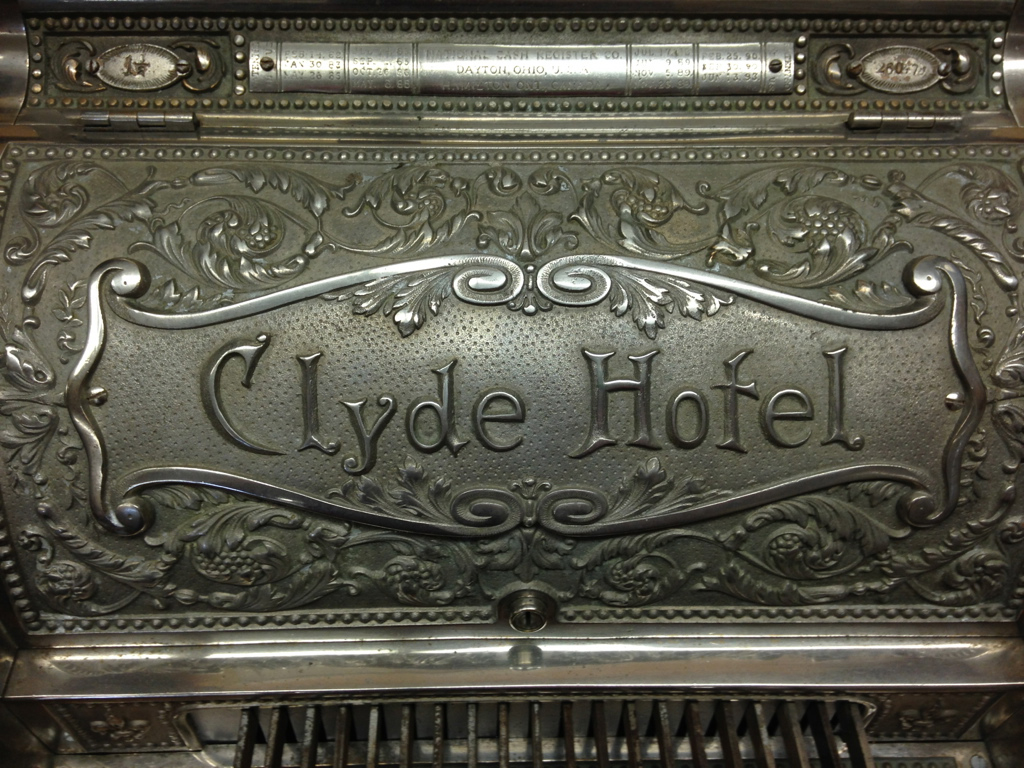
Clyde Hotel Cash Register
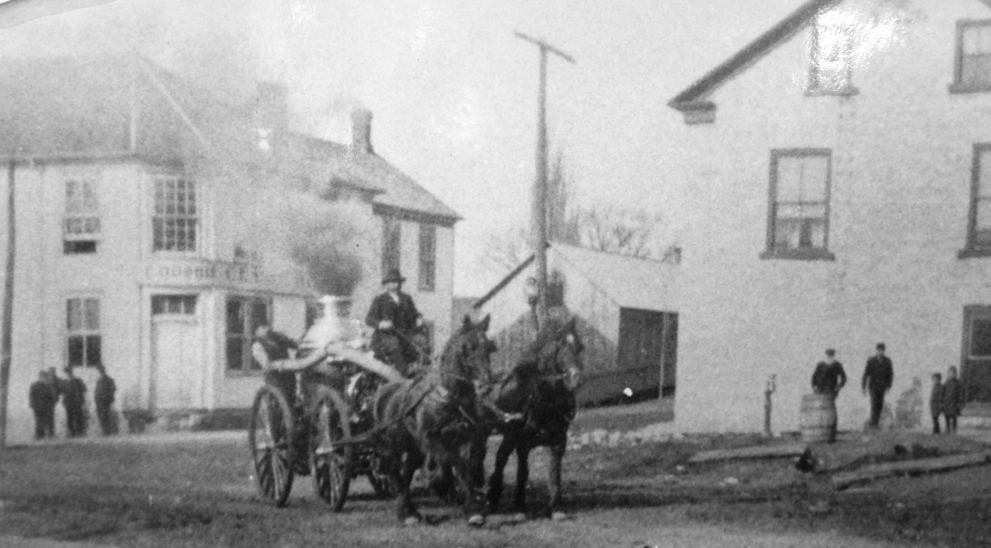
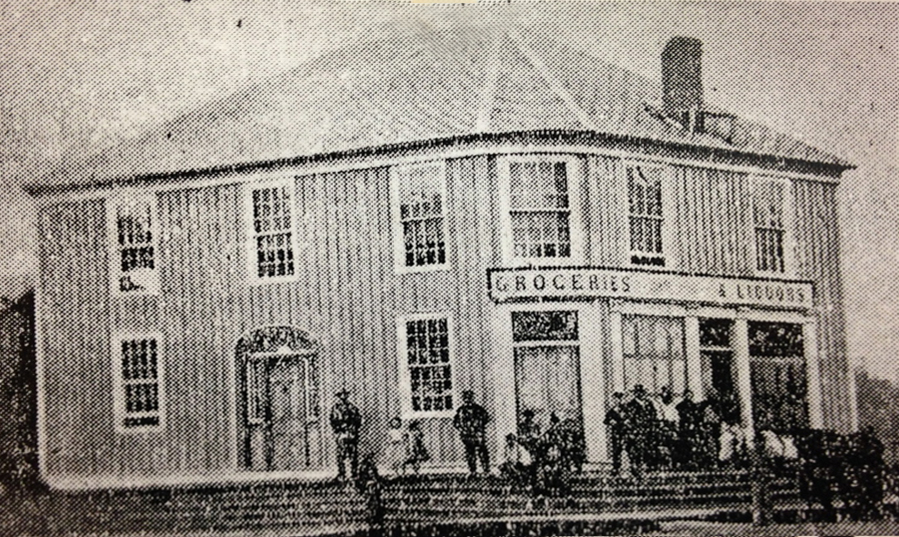
The Clyde Hotel. Thomas Dobbie, proprietor
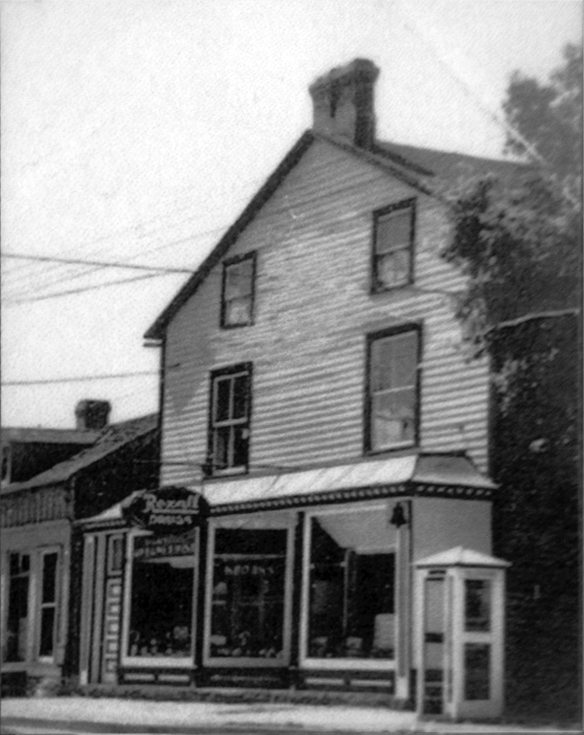
Hunt’s & Strang’s Drug Store
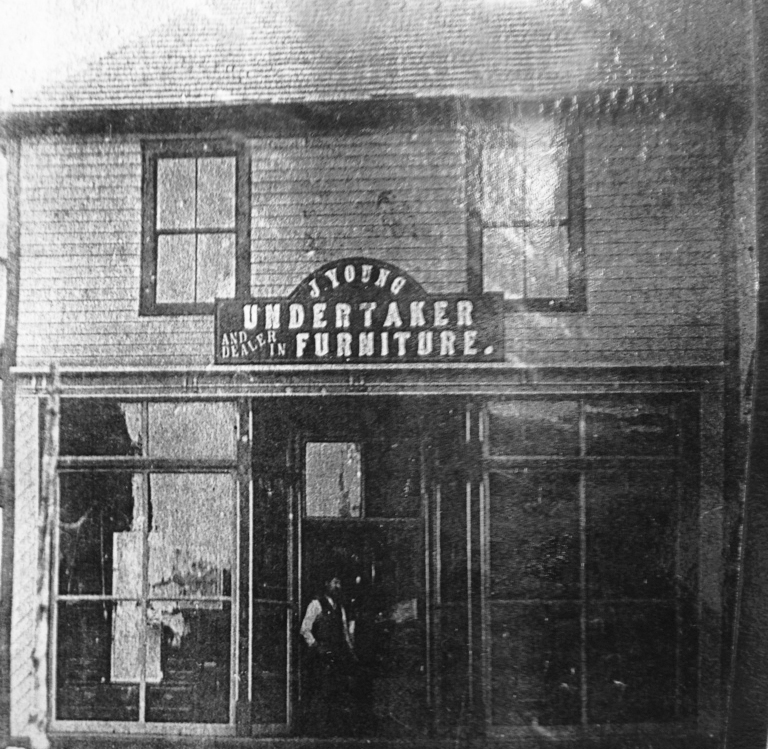
Jimmy Young’s Furniture, Undertaker and Embalmer Store
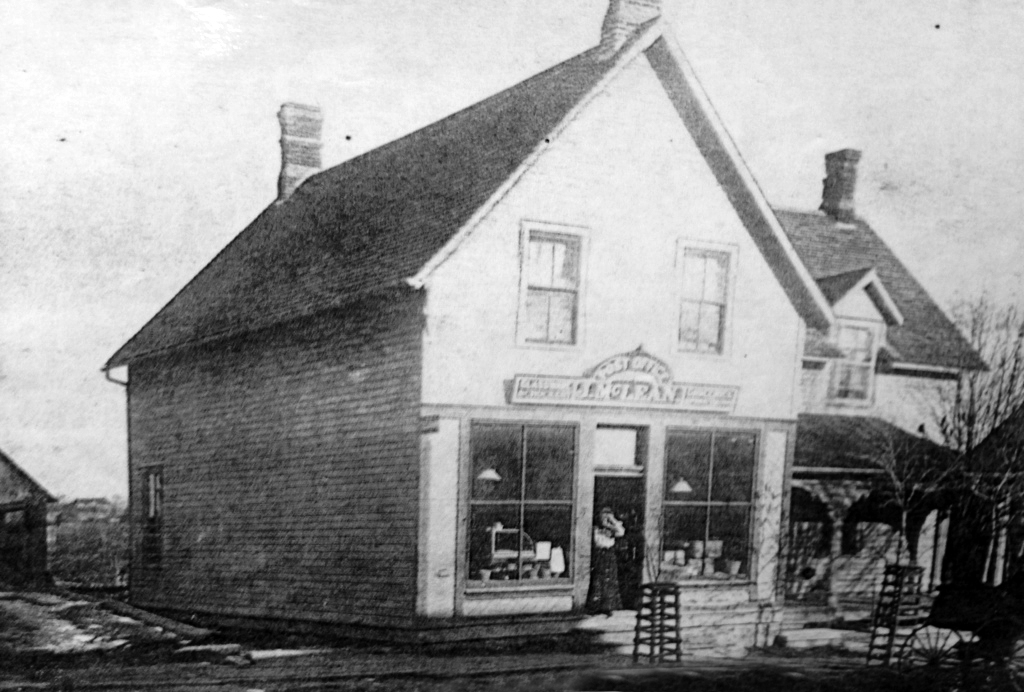
Post Office
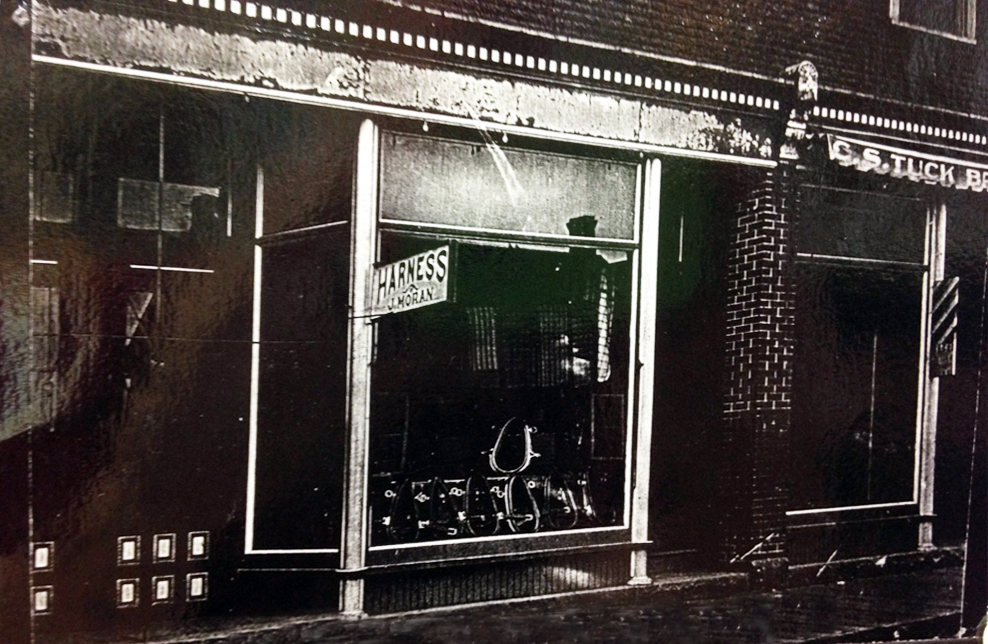
John Moran’s Harness Shop
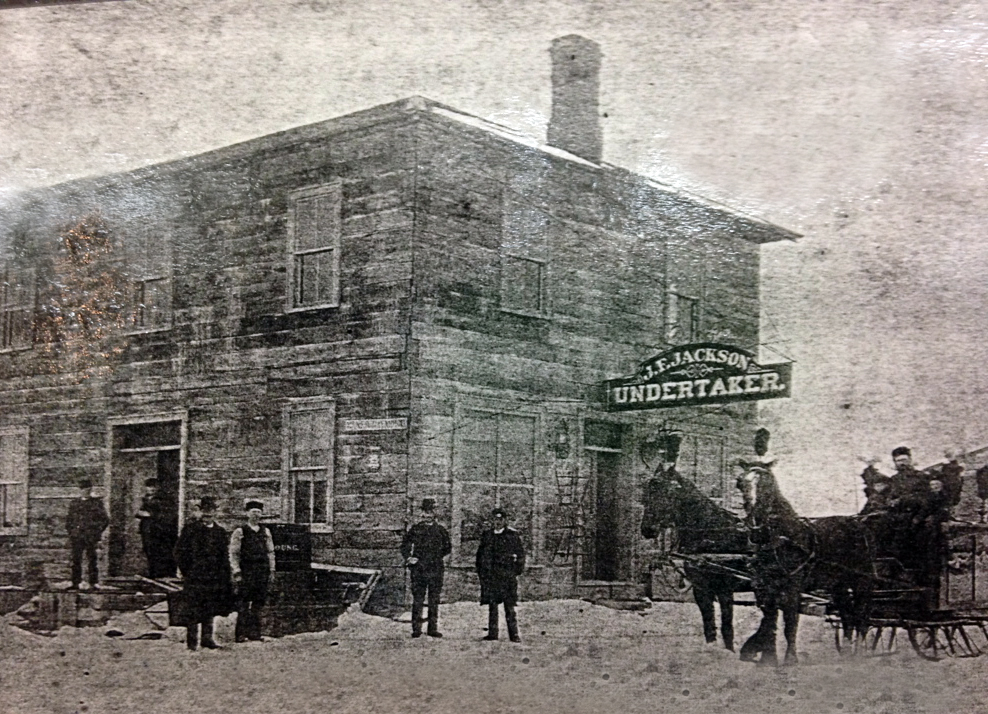
Funeral Home, Jackson’s House, Apartment Building
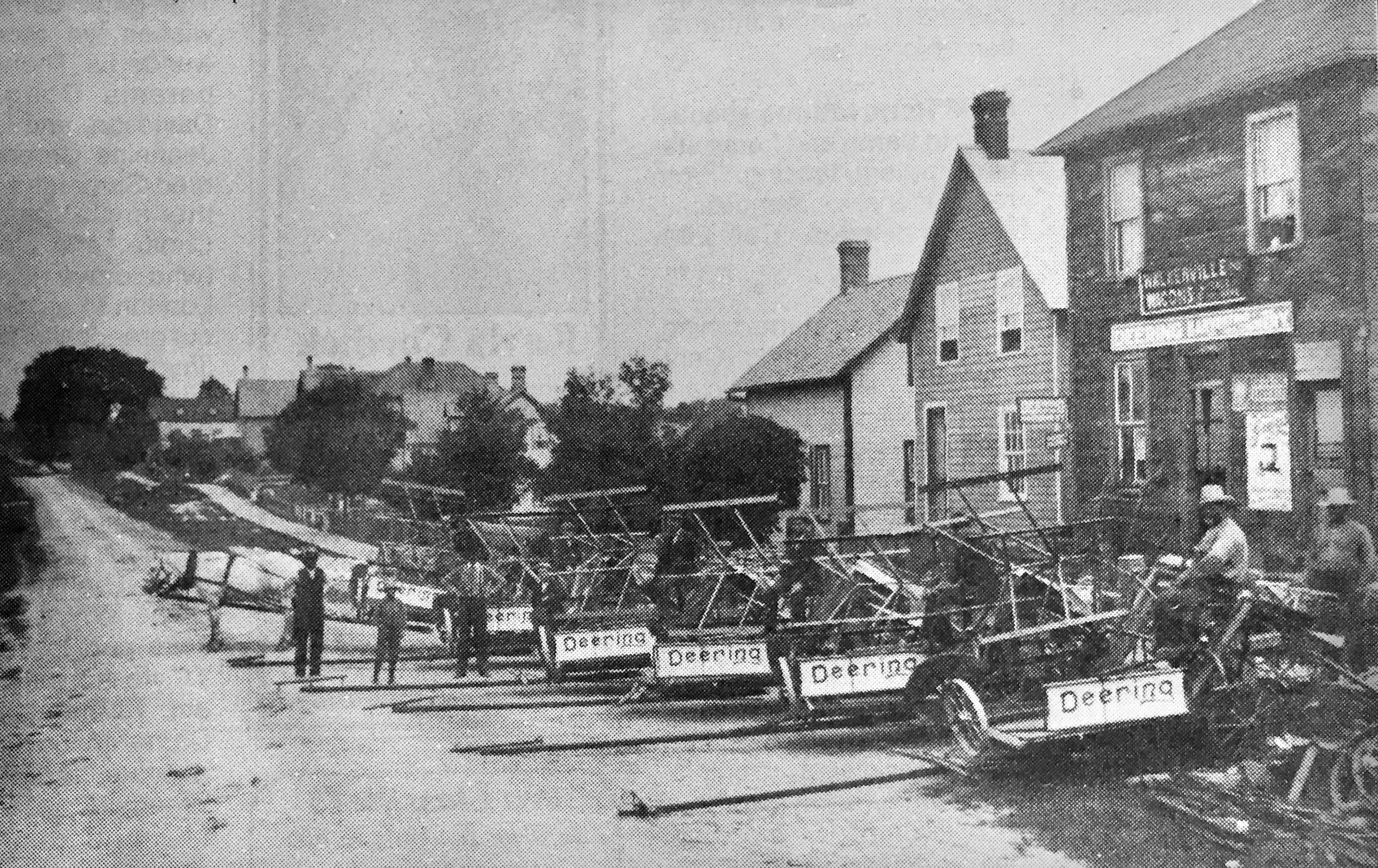
Upper George Street, Lanark, shop of John P. Leslie, wagon maker. The shop did buggy repairs, general, built new wheels, etc. and was also an agency for the machinery shown in front. Mr. and Mrs. Leslie lived above the shop at the time. Next is the home of James Darou and next the Labelle home.

CLYDE HALL AND THE CALDWELLS
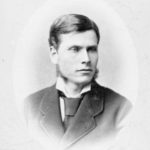
CALDWELL, WILLIAM CLYDE (originally William Caldwell), businessman and politician; b. 14 May 1843 in Lanark, Upper Canada, son of Alexander Caldwell and Mary Ann Maxwell; m. first 1868 Ida Virginia Cauldwell, his second cousin (d. 1869); m. secondly 1871 Katherine Smith Falconer, and they had three sons and four daughters; d. 7 Jan. 1905 in Lanark.
In 1821 William Caldwell’s grandparents emigrated from Renfrewshire, Scotland, to the Lanark settlement in eastern Upper Canada. From their teens, William’s father and uncle, Boyd Alexander Conyngham Caldwell, were engaged in the square-timber trade in the Ottawa valley; after they severed their partnership in the 1850s, each gradually brought his eldest son into business. William helped managed his father’s lumber operations and became a partner in A. Caldwell and Son, which had timber limits on the Clyde River in Lanark County and in Pontiac County, Lower Canada. Unlike his father, who had been trained solely on the river and in the bush, he also received a university education, graduating from Queen’s College, Kingston, in 1866 with a BA.
By 1872 William had inherited the firm and with it grist-mills and sawmills in Lanark village. About this time he took a middle name (Clyde) to distinguish himself from other William Caldwells, a number of them relatives. He also began to expand his business interests. Between 1870 and 1877 he joined Horace Brown in a grist-mill operation known as Brown and Caldwell at Carleton Place. A. Caldwell and Son added another sawmill, at Almonte, and in 1882 Caldwell was developing a sawmill and shingle-mill at Clyde Forks in Lavant Township, near the path of the developing Kingston and Pembroke Railway. Soon after the mill opened, Clyde Forks was swept by fire and he sold his Clyde limits to Calvin and Son of Kingston.
Caldwell moved to Kingston in 1883 and reduced his business commitments to the operation of the Clyde Roller Mills (flour and oatmeal) and the Aberdeen Woollen Mills in Lanark village. He nevertheless developed an interest in prospecting and speculated in iron-ore properties in the Lanark-Renfrew area, on Gunflint Bay in the international border region of northwestern Ontario, and north of Temagami. He contributed several mineral samples to Ontario’s exhibit at the Columbian exposition in Chicago in 1893.
Caldwell could never give his undivided attention to business because of a lifelong involvement in politics. He had been a township councillor and school trustee and was reeve of Lanark when he was nominated in 1872 to stand as a Reformer in the provincial by-election in Lanark North, where he defeated Bennett Rosamond. He spent 23 of the next 33 years as the member for that riding (1872–75, 1879–86, 1888–94, 1898–1905). Despite this long service to the Liberal party, most of it under Premier Oliver Mowat, he never held a cabinet position though he sat on several committees, including railways, and was a chairman of the house in committee. He was described by Perth and Lanark newspapers as courteous and obliging in his political life but perhaps too independent in thought and straightforward in manner to be trusted with higher office.
Although Caldwell had moved to Kingston and spent much time in Toronto as an MPP, he maintained an estate and farm in Lanark, where he was active in the village’s horticultural society and was a member of St Andrew’s Church (Presbyterian). A freemason, he was a member of the local branches of the Sons of Scotland, the Order of United Workmen, and the Independent Order of Foresters. In 1899, as an MPP, he oversaw the passage of the bill to incorporate the North Lanark Railway Company. In Kingston he served from 1883 to 1904 as a trustee of Queen’s College and the development of a school of mining there in 1891–93 may have owed something to his mining activities and his influence in the Ontario legislature. It was his interest in prospecting that led to a consuming passion for recreational canoeing. He took his sons to Mazinaw Lake in 1895, by way of the Mississippi River, which ran through Lanark County, and to James Bay in 1901, and he combined business with pleasure in trips to the Temagami lakes in 1902 and 1903. On the latter outing, for which he kept a diary, he was, the Perth Courier noted, “one of the jolliest and most interesting of entertainers.” Diaries also survive for his travels in Britain and Europe in 1874 and in Manitoba in 1878.
C. Caldwell died in Lanark in 1905. An educated, upper-class individual who pursued business, politics, and recreation as separate but linked spheres, he represented a new generation of Canadian-born lumbermen, with skills in both the city and the bush. He was adept at combining the extraction of resources with secondary manufacturing, and when he was burned out in one area he had sustaining investments in others. As a politician, he developed a strong regional base, but perhaps because of his independent disposition or the limited importance of Lanark, Caldwell failed to achieve cabinet rank. Source: Dictionary of a Canadian Biography, Larry Turner
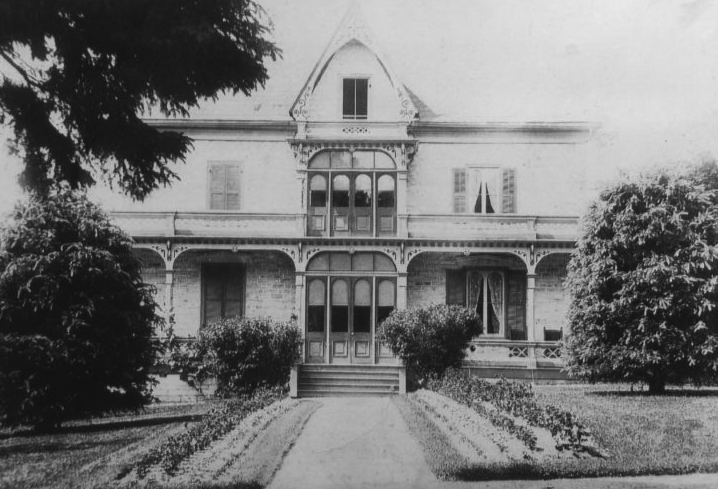
Clyde Manor
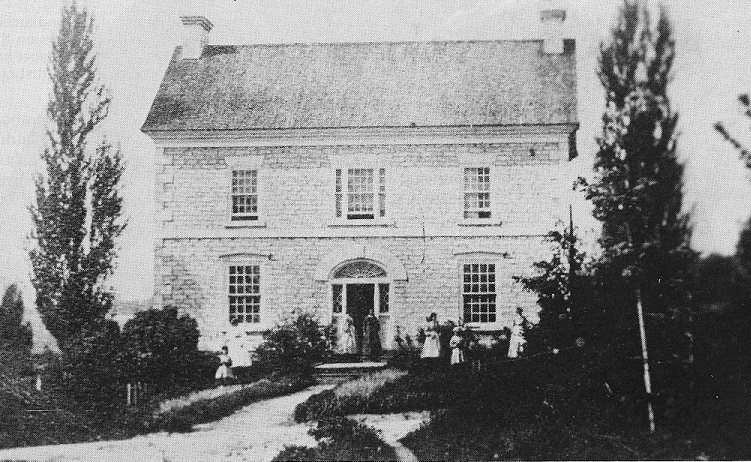
Clyde Hall, Lanark Village, c.1860. Built in the mid 1840s, this handsome house overlooking the Clyde River reflected the property derived by Alexander Caldwell from his combined gristmill, carding mill and timber operations.
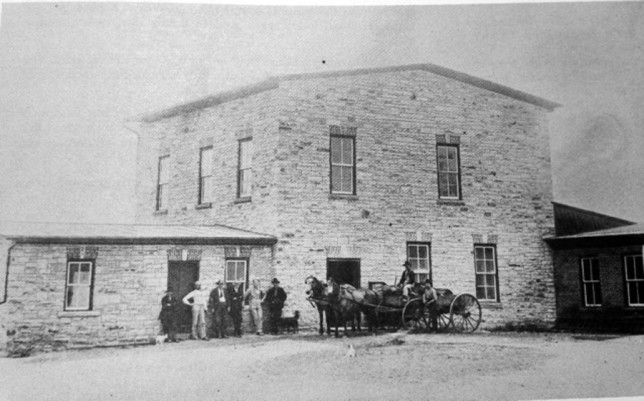
W. C. Caldwells Aberdeen Mills, Lanark Ontario. Grist and carding mill. Photo: Ewan R. Caldwell Collection, Negative No. PA-135197. Public Archives of Canada.
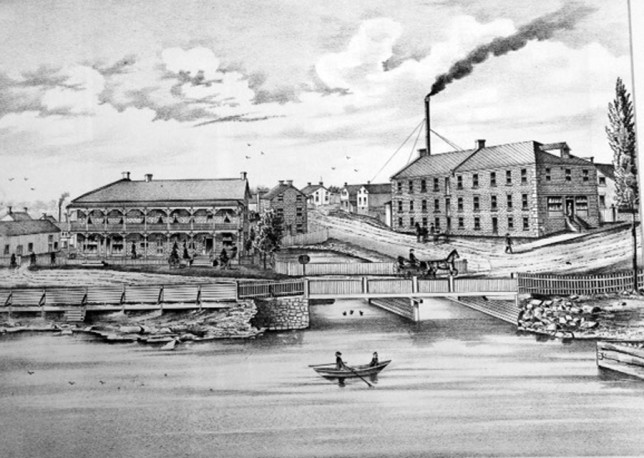
Residence and Mills of Boyd Caldwell, Lanark Ontario. Manufacturer of woollen goods and dealer in lumber and square timber.
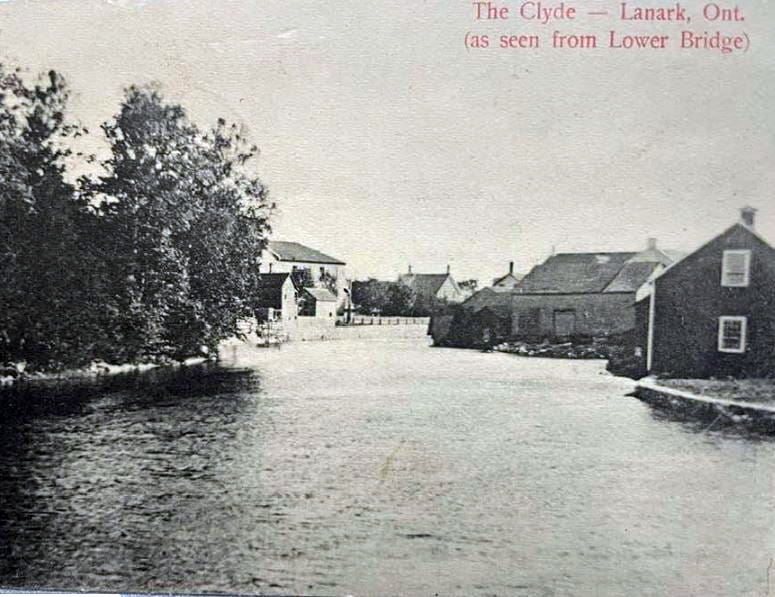
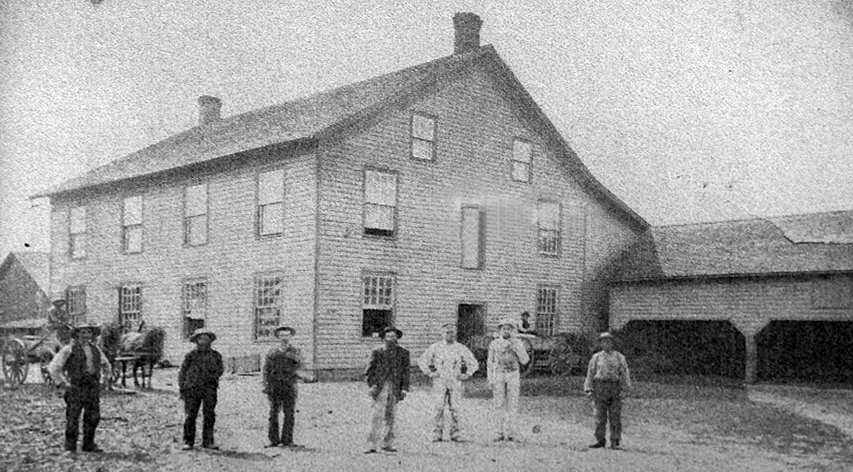
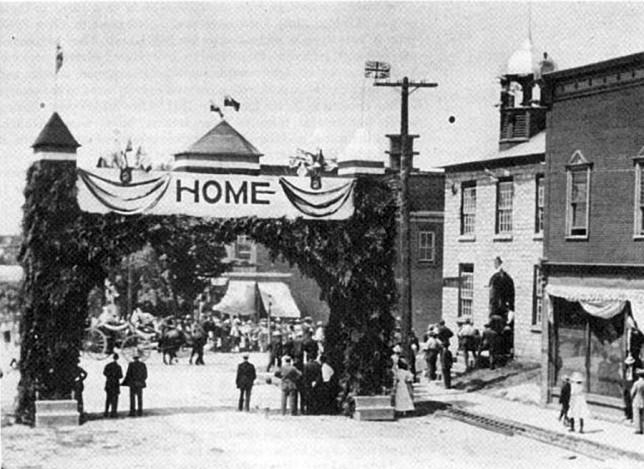
1913 Old Boys’ Reunion, Main Street, Lanark Village. Photo: Negative No. C-25995, Public Archives of Canada.
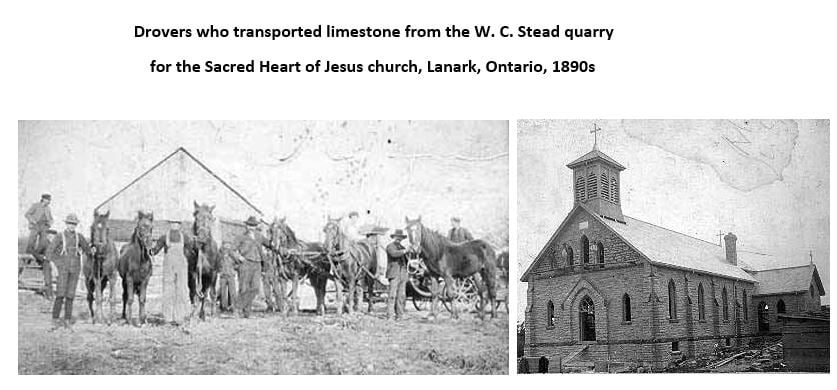
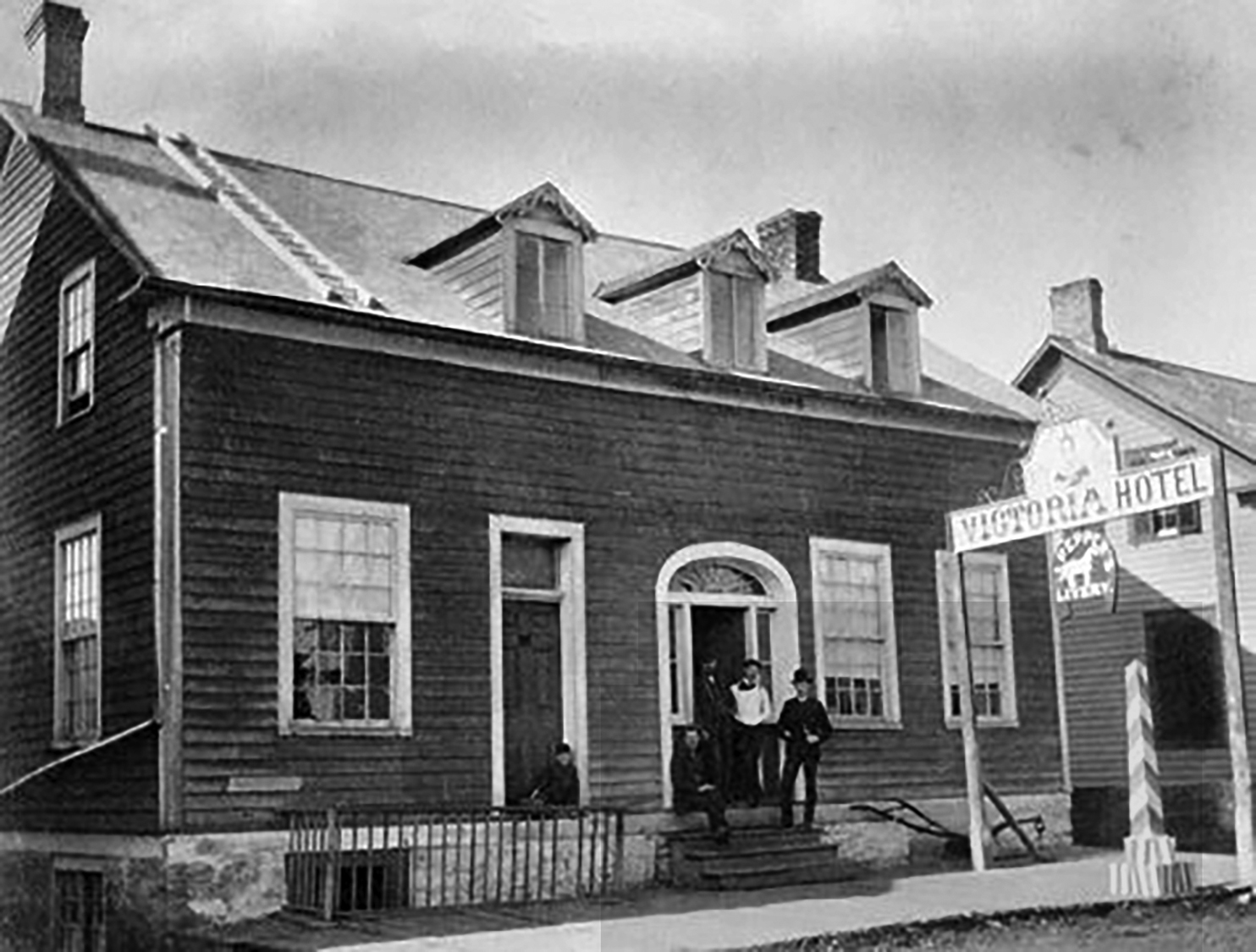
The original Victoria Hotel
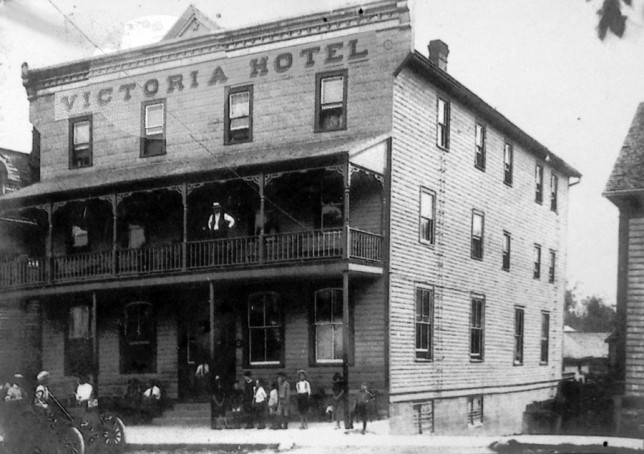
The Victoria Hotels was well-known to the traveling public for the excellence of their cuisine and smart attendance. The Victoria had been remodeled several times and had a liberal patronage. Mr. James Pepper, the landlord, was known far and near and a kinder hearted man never lived.
Review below from THE PERTH COURIER 1890
Lanark possess the advantages of a well equipped and well conducted hotel, of which we desire to make brief mention here. Since coming under its present management about four years ago by purchase, the Victoria has been known as one of the best country hotels in Eastern Ontario. The enterprising and popular proprietor, Mr. Jas. Pepper, has neglected nothing in making the hotel all that could be desired. The house is comfortably furnished throughout, and affords every accommodation. For the convenience of commercial travellers the house has recently added sample rooms, large, well lighted and neatly painted. It has good stabling and livery in connection.
BALDERSON
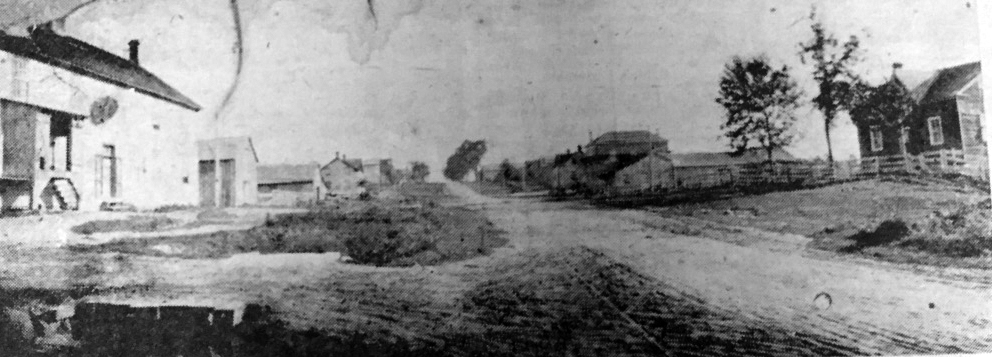
Balderson in 1905. Rom the left: the original Balderson cheese factory erected in 1881; the Noonan Blacksmith shop; Cowie home; Anglican Church and Rectory;. From the right; Noonan home; Jone’s store Haley property (1962); J. M. McGregor property; J.C. McGregor barn and home.
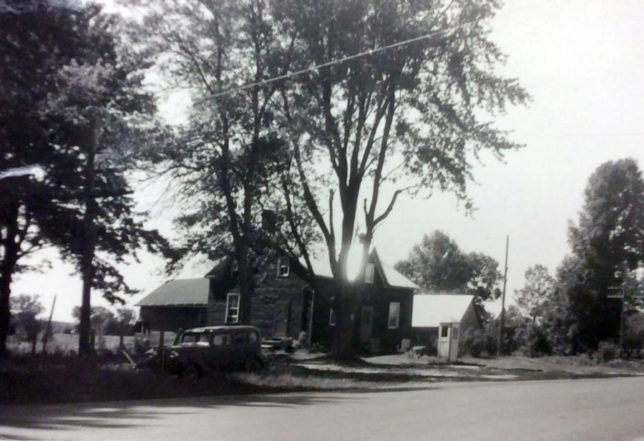
Balderson Telephone Company. It was formed in 1910 and by 1915 it had 114 subscribers! Originally 200 poles were bought and distributed by 2 men and a team of horses for 30 cents an hour. Note the phone booth out front of the house in the picture. The company wa bought by Bell Canada in 1977.
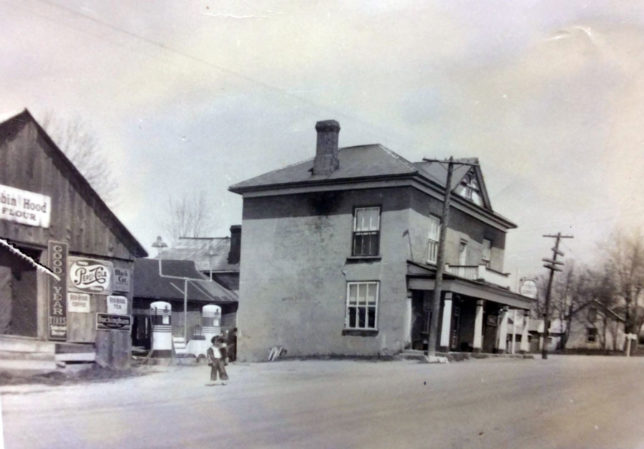
This hotel and later general store was built in the early 1850s. It was the location of the first post office. The village had 11 post masters beginning with Mr. McDonald in 1858 and ending with Earl Myers in 1989 in part of Myers’ General Store.
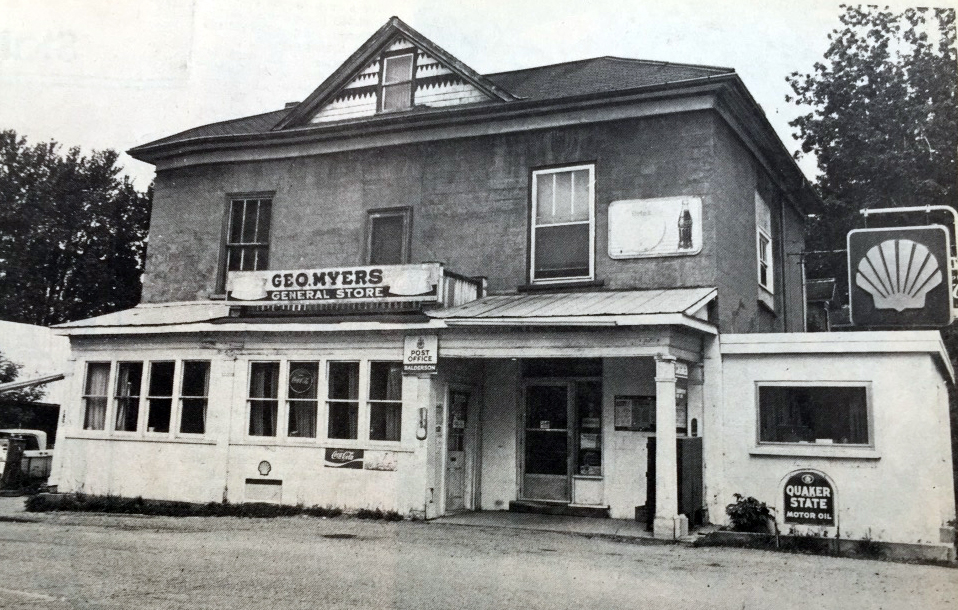
MIDDLEVILLE
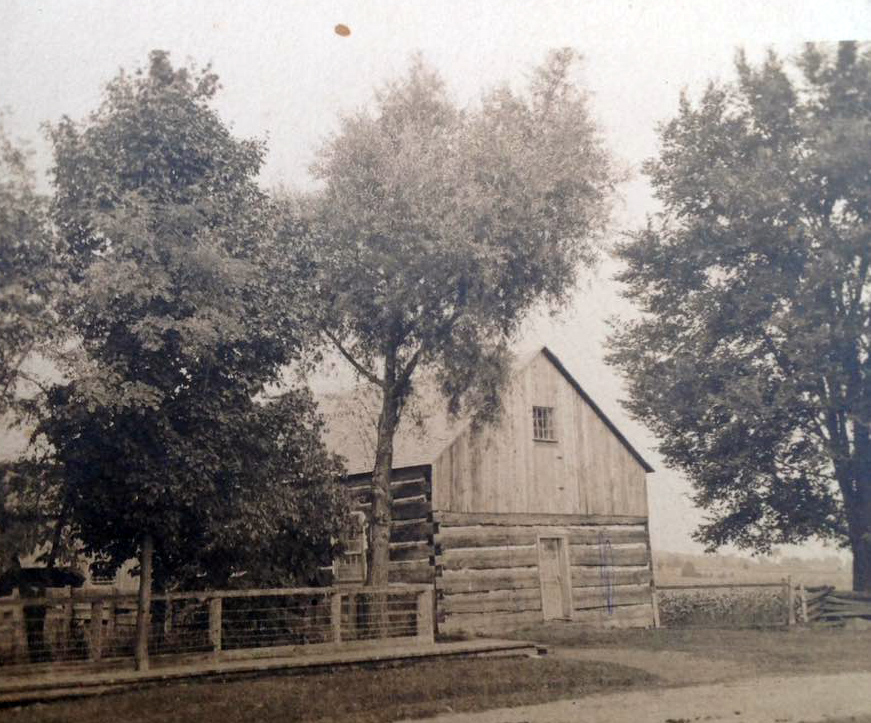
1st Congregational church, Middleville Ontario. Photo: Middleville & District Museum
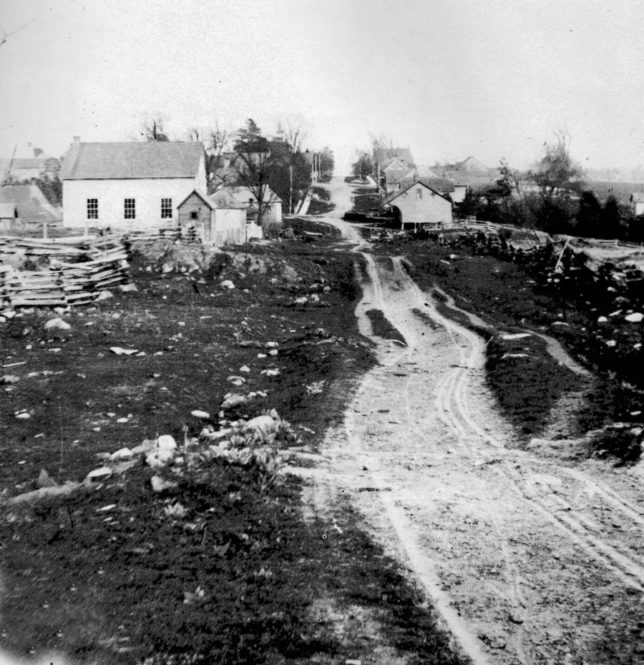
Main Street – Cheese factory to the right and School to the left. Photo: Libraries and Archives Canada PA-79044 – c.1900
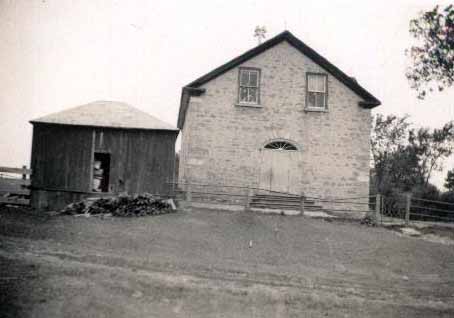
Middleville Public School 1941
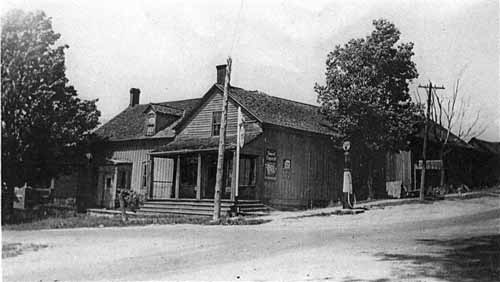
Middleville General Store
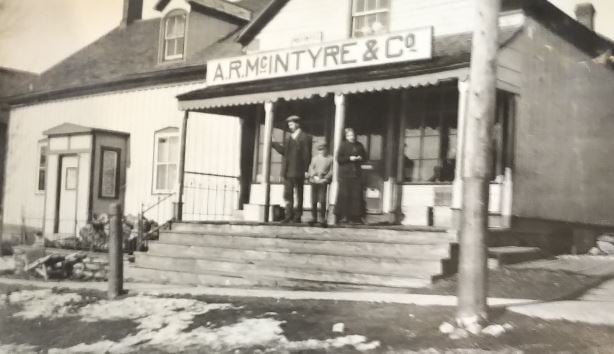
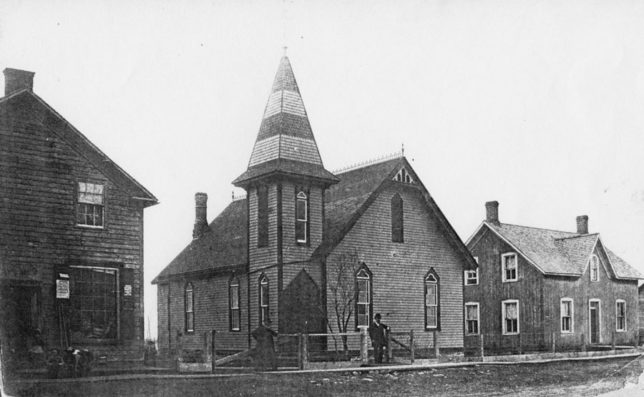
Middleville Main St. Showing Baptist Church, Gifts Store & Post Office. Photo from the Borrowman Collection, courtesy The Middleville Museum. 1886.
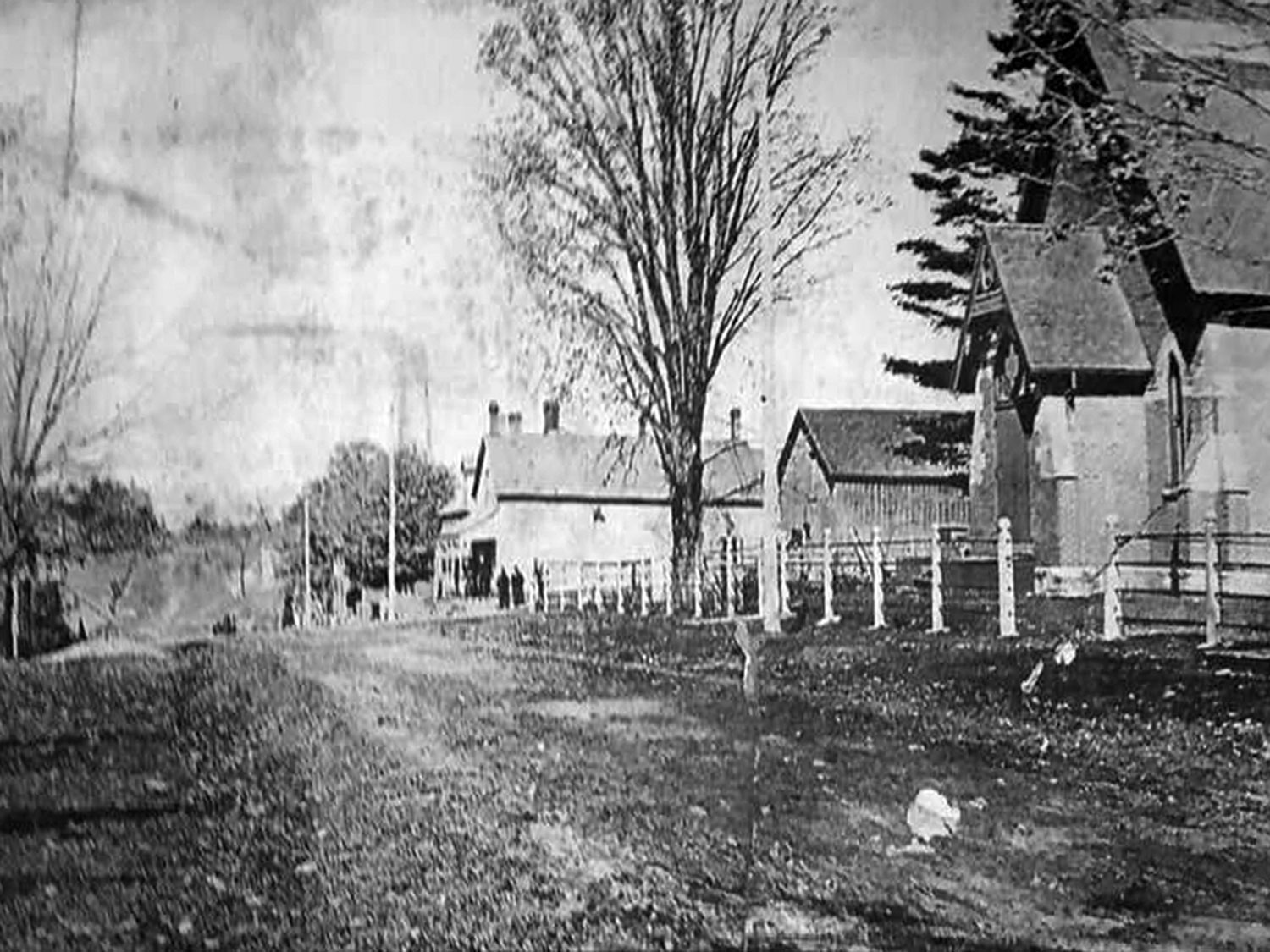
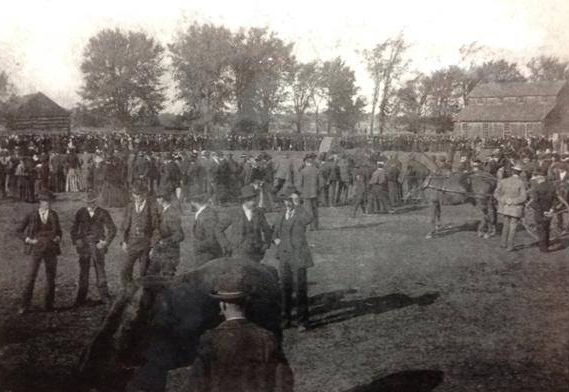
Photo taken sometime between 1883 and 1902. Photo: Middleville & District Museum
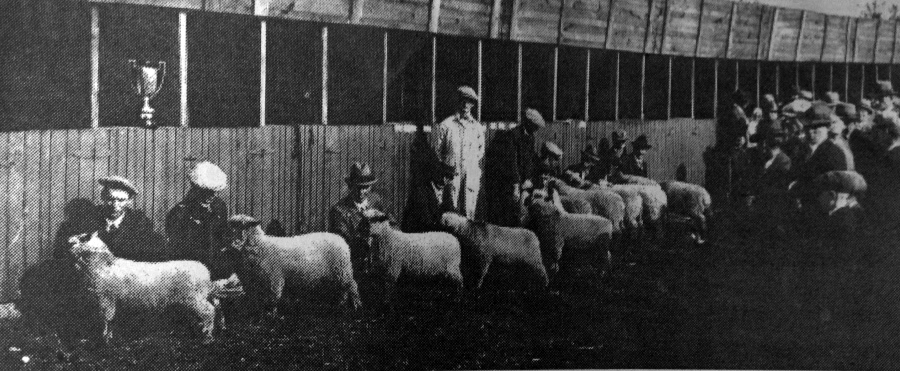
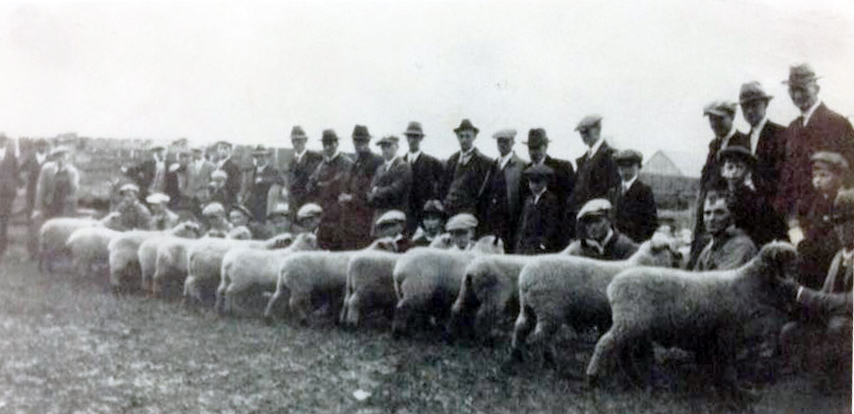
Sheep Competition 1927, Middleville Fair. Note: Alex Bowes & Prize Winning Sheep in centre. Photo: Middleville & District Museum
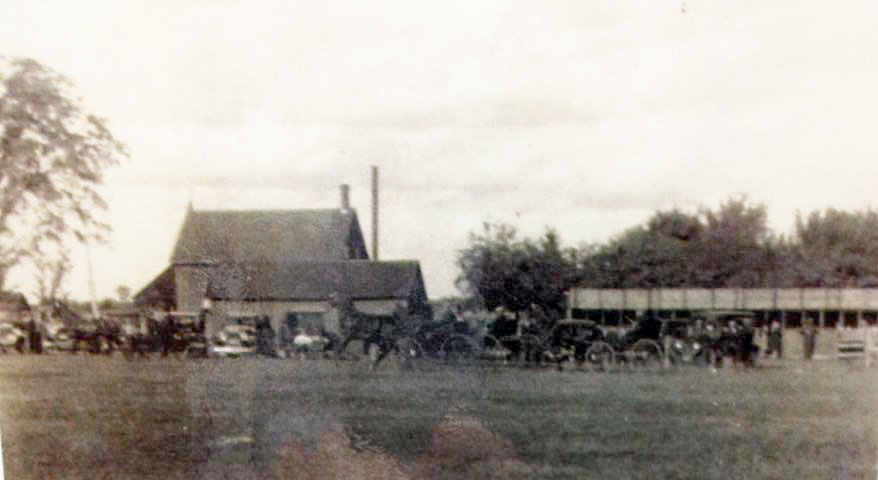
Middleville Fair 1932. Photo: Middleville & District Museum
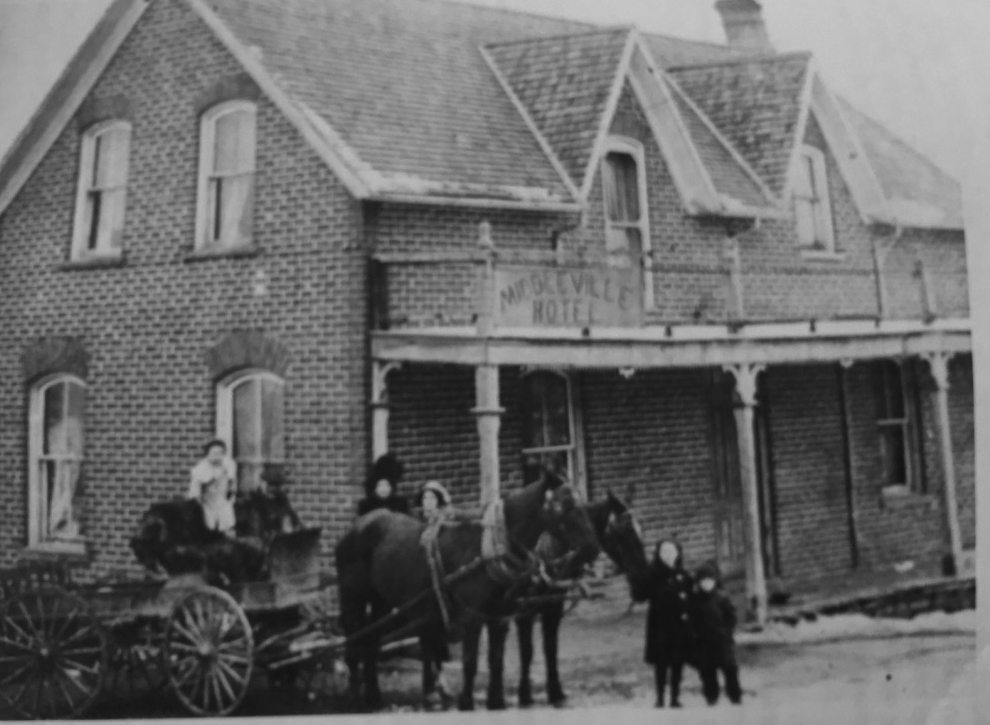
Middleville Hotel
HOPETOWN
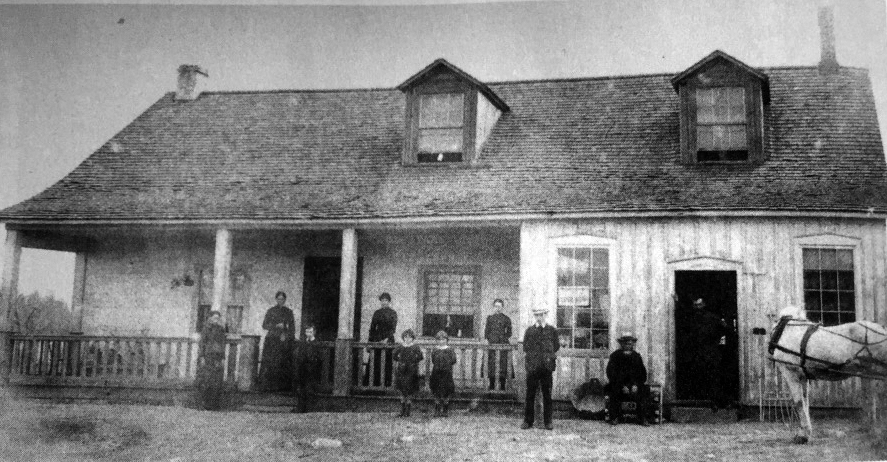
Hopetown Hotel
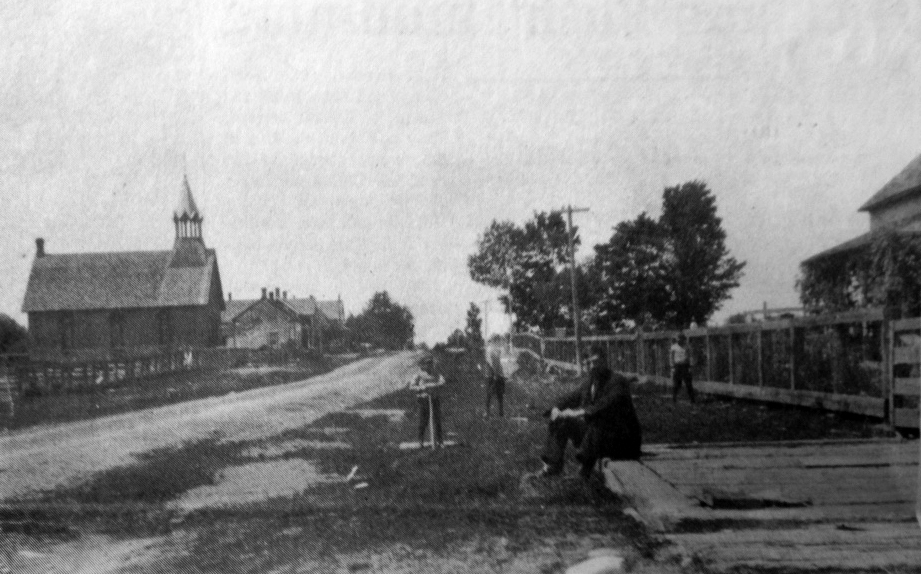
The main thoroughfare of Hopetown.
LAVANT
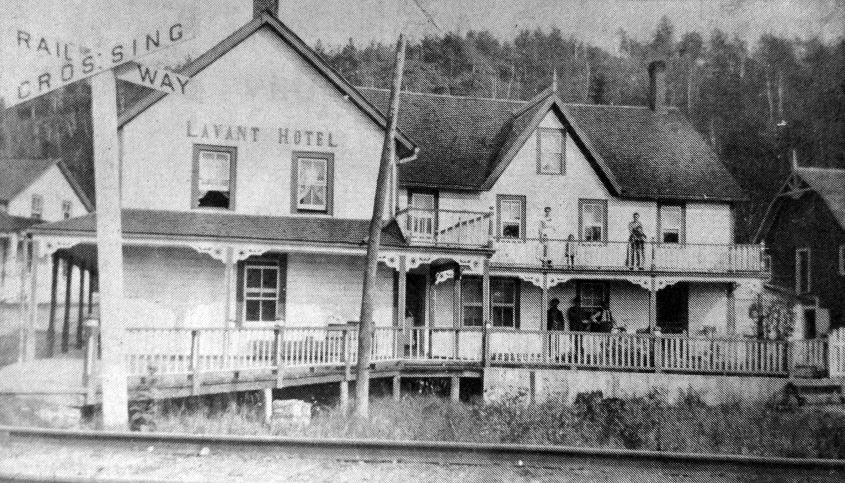
Lavant Hotel
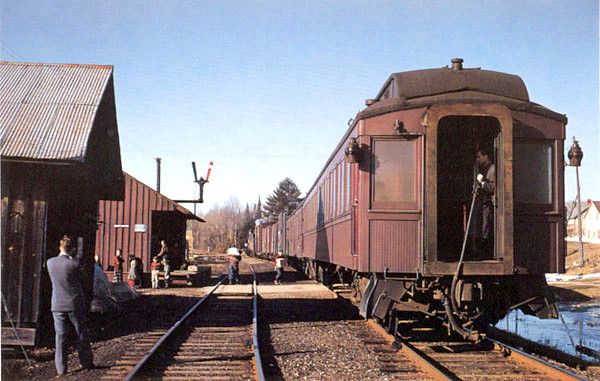
Lavant Station on the K&P – Kingston to Pembroke line

McDONALDS CORNERS
The village of McDonald’s Corners, was named after three McDonald families who were among the village’s first inhabitants who were Scottish immigrants in 1821. Similar to most rural villages in Lanark County, McDonald’s Corners was once a self-sufficient community providing the local community with general stores, inns, shops along with the local blacksmith and carriage maker’s businesses, and of course a church and a school.
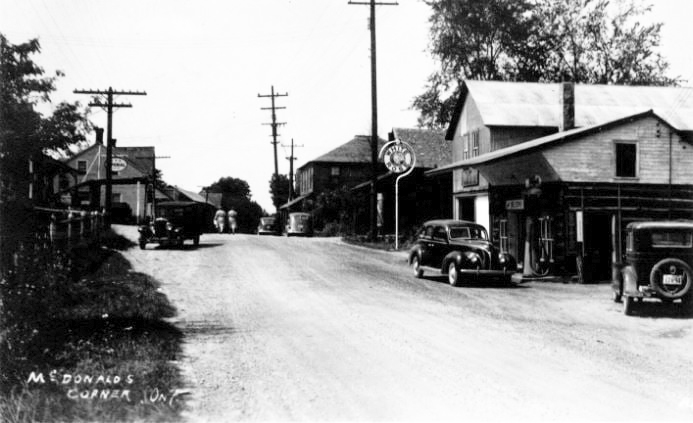
WATSON’S CORNERS
Watson’s Corners was founded in 1821 by immigrants from Scotland, having traveled to Canada aboard the ship ‘Prompt.’ The village was named in honour of the village’s first innkeeper and postmaster, William Watson.
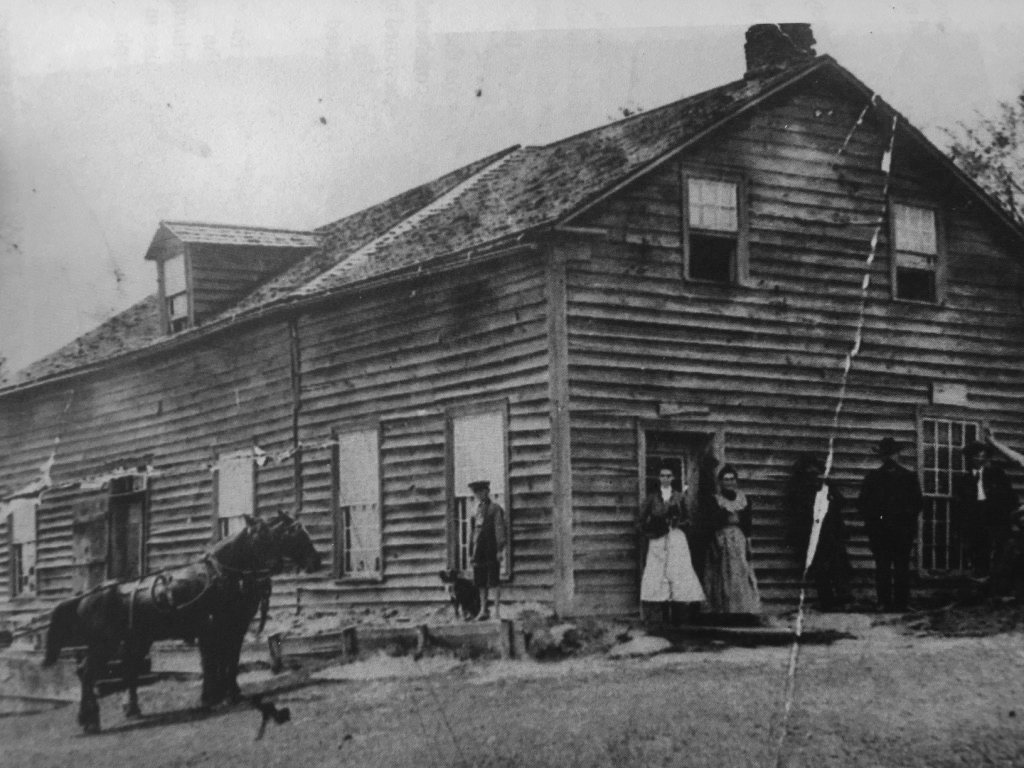
The Reindeer Hotel in Watsons Corners. 1840s and then destroyed by fire in 1988.
POLAND
Mistakenly named “Poland” really should have been named “Paul Land” after the first Postmaster, Moses Paul.
HARPER
The Harper General Store c.1910. The building was bought by John Butler in 1877 for $340 and the store served the community until about 1970. From left in the photo are Gerald Cunningham, James Cavers, Bob Anderson, G.E. “Ned” Wilson, John Butler, Jack are and George Brownlee. Photo: The Perth Courier
FALLBROOK
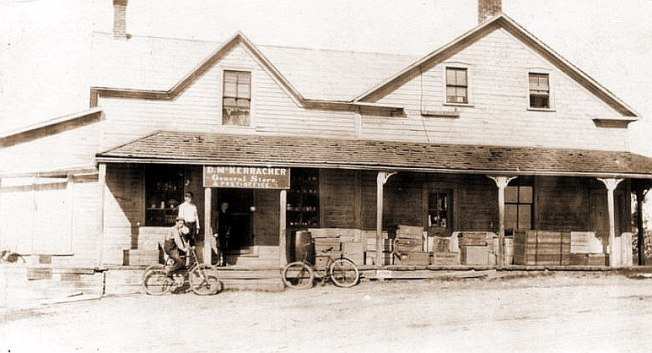
RIDEAU FERRY
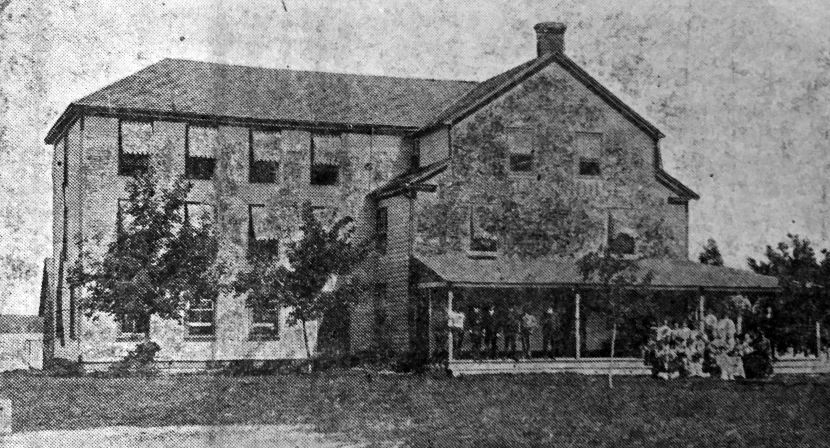
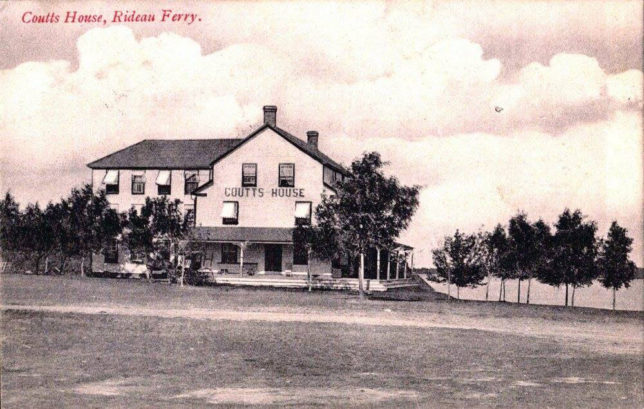
The Coutts House, once the hub of social life in the Rideau Ferry area. It was on this site that the Rideau Ferry Inn was built
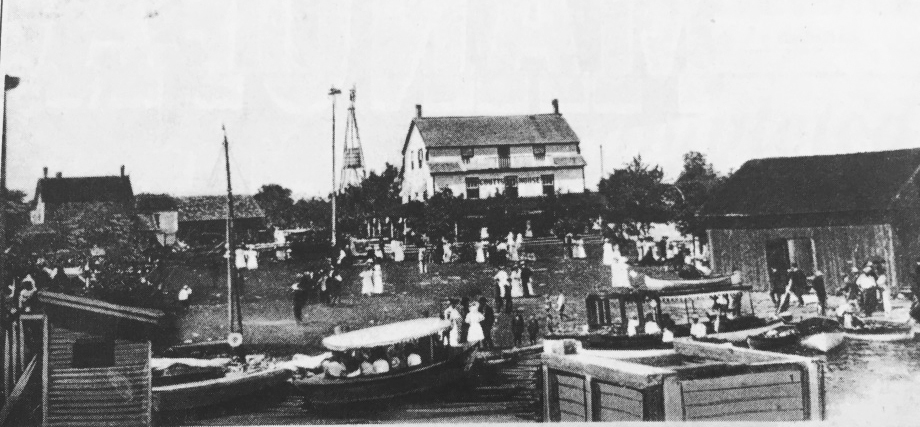
Originally named, Oliver’s Landing after John Oliver who set up his famous raft to ferry commuters across the narrows. Two of the more interesting characters along the route, Oliver and his son were known as prickly fellows, remembered today as much the legend of the vanished customers as their role in operating this crucial transportation link. Eventually the need for a more practical crossing method led to the first wooden bridge being built in 1874. This bridge was replaced by a two span iron swing-bridge in 1896. After a tank truck fell through the bridge in the 1960s the current six-span arch-bridge was erected and is in use today.
Oliver’s Ferry, later known as Rideau Centre and finally Rideau Ferry, had a thriving economy in the late 1800’s, included lumber and saw mills, trapping, maple syrup production, a stone mason, dairy farming, and a cheese factory to name a few. While roads and rails diminished the commercial importance of the Rideau Canal by the second half of the 19th Century, Rideau Ferry became a recreational hub as summer cottages and homes were established along the shore and many of those same families continue to enjoy this area.
The Rideau Ferry Inn
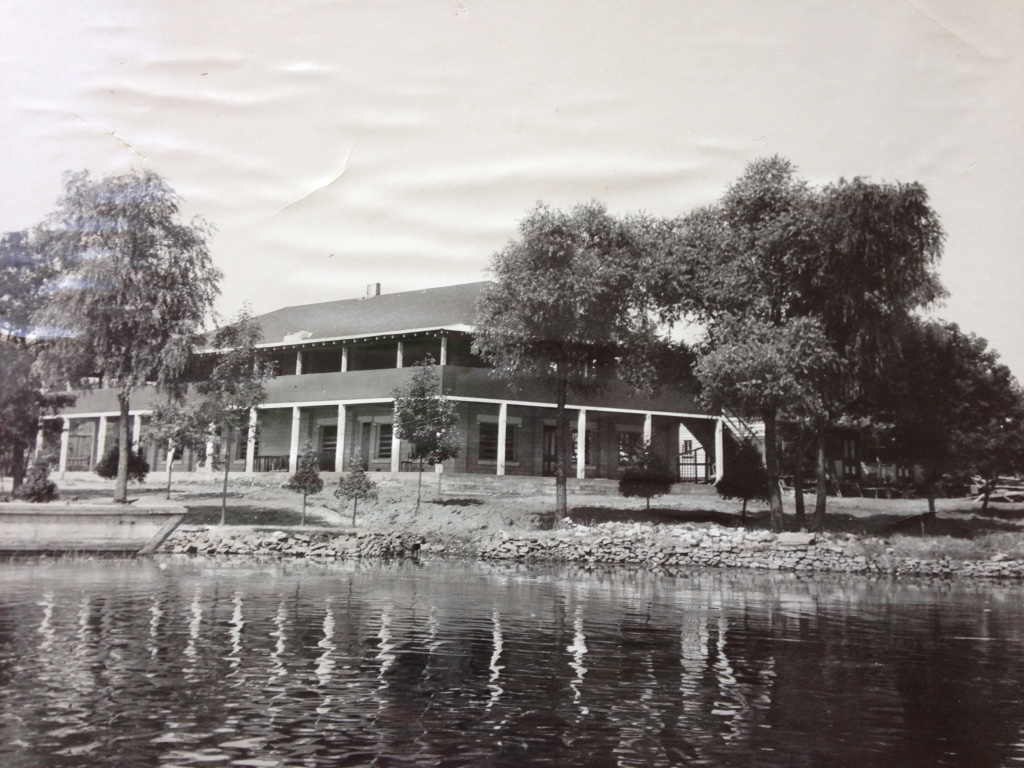
Nothing epitomizes Rideau Ferry’s golden years like the Rideau Ferry Inn. Starting as the Coutts House, a three storey summer hotel, it was purchased by Doug Wallace, rebuilt and renamed in 1947. A favourite spot for weddings it was best known for its Saturday night dances bringing in bands such as The Staccatos, The Digratos (a local house band from Smiths Falls), The Five D, The Townsmen, The Esquires and The Continentals featuring Dennis Staples, who would later become mayor of Smiths Falls, on lead guitar. The Inn changed owners in subsequent years and sadly burned to the ground February 1986. The Shipwreck restaurant occupies that site today.
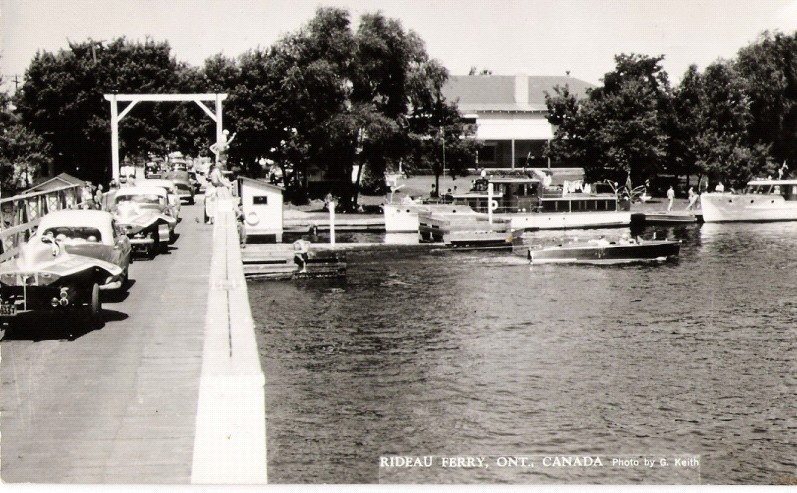
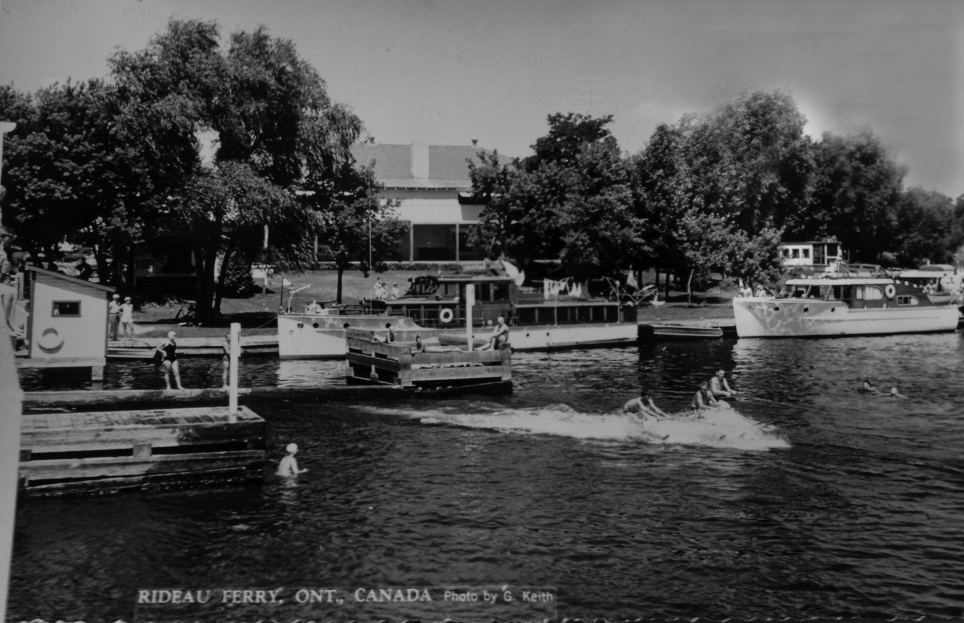
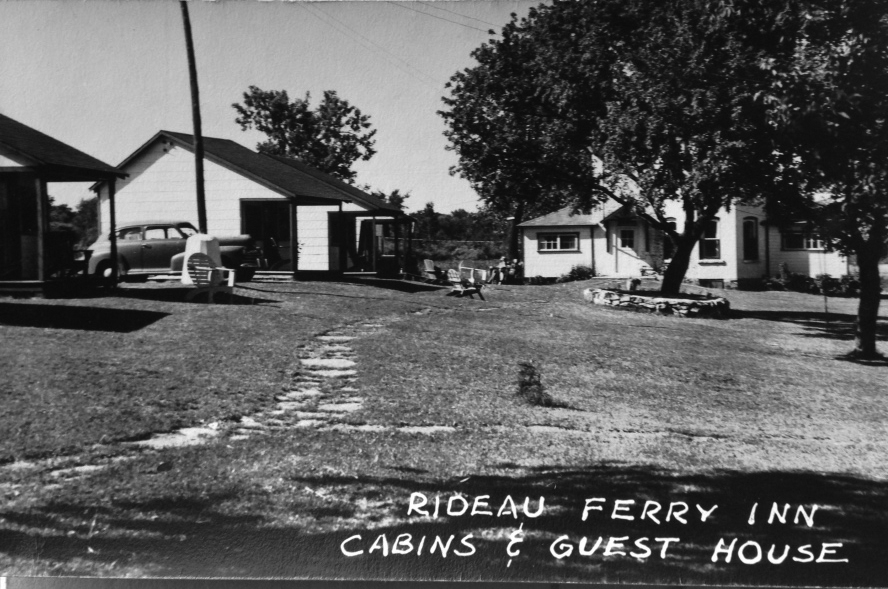
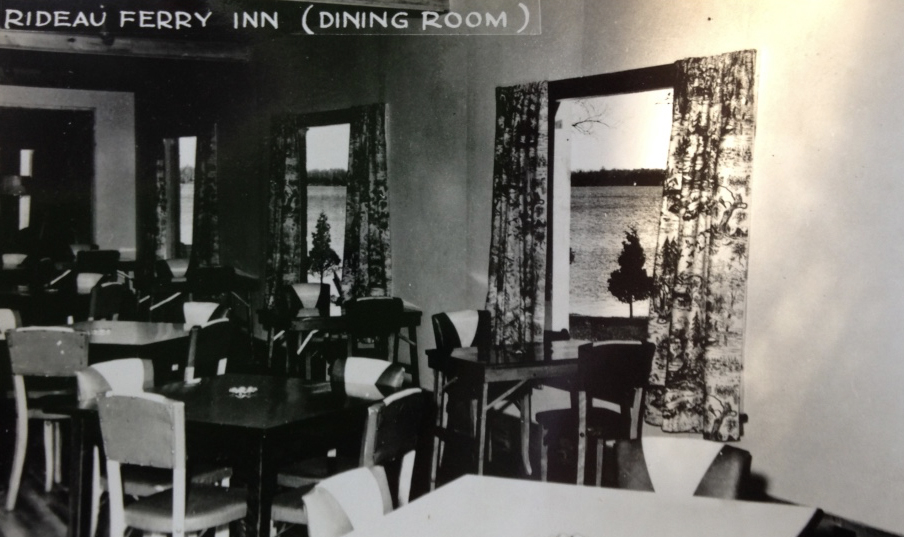
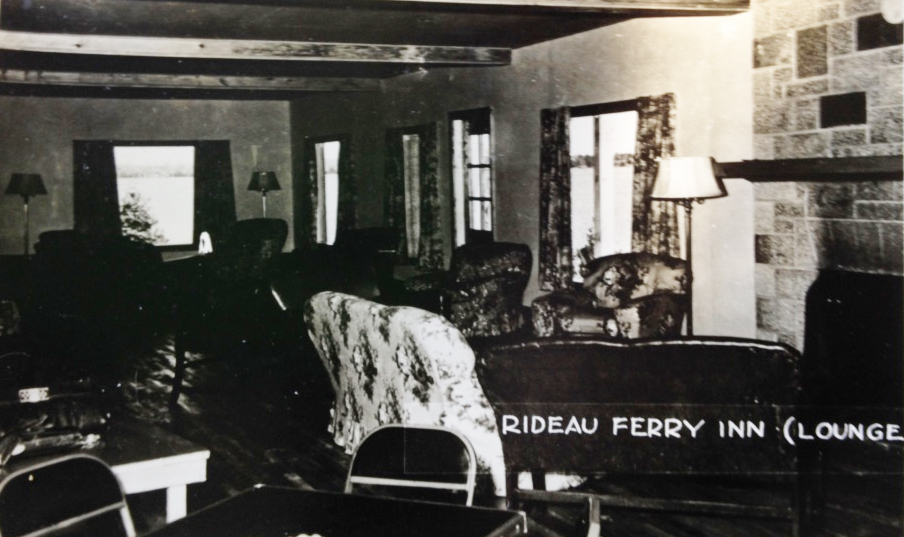
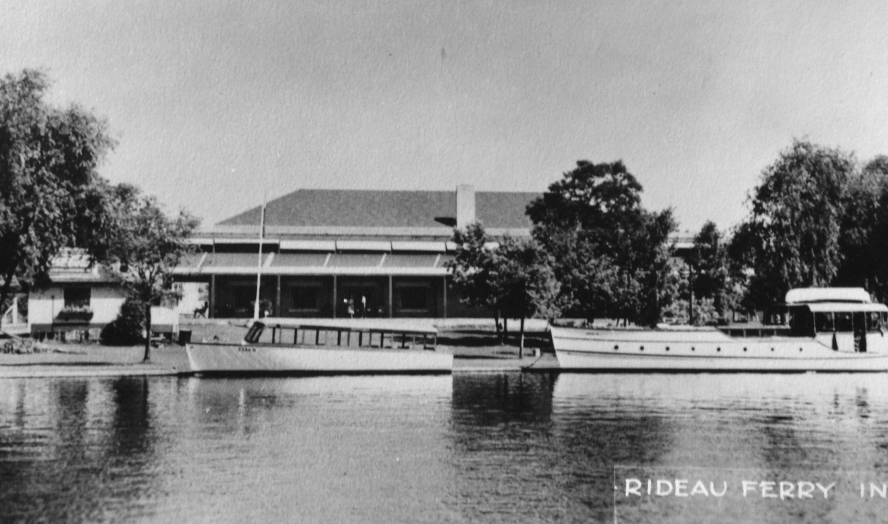
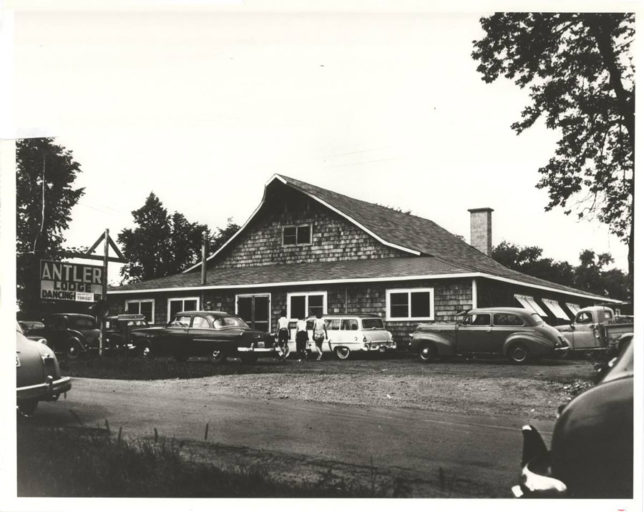
Antler Lodge, Rideau Ferry
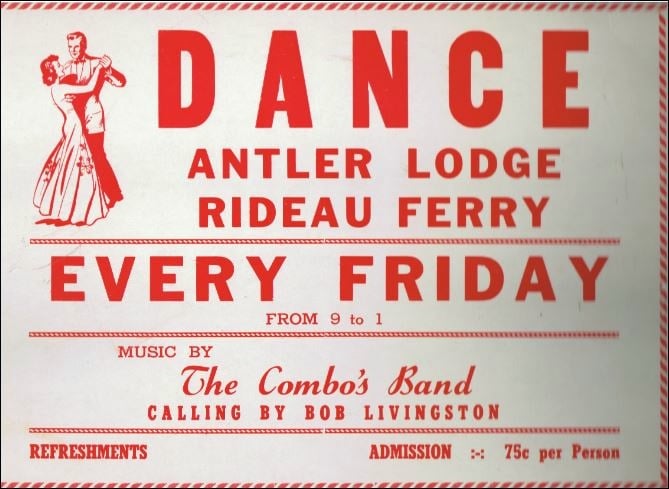


PORT ELMSLEY
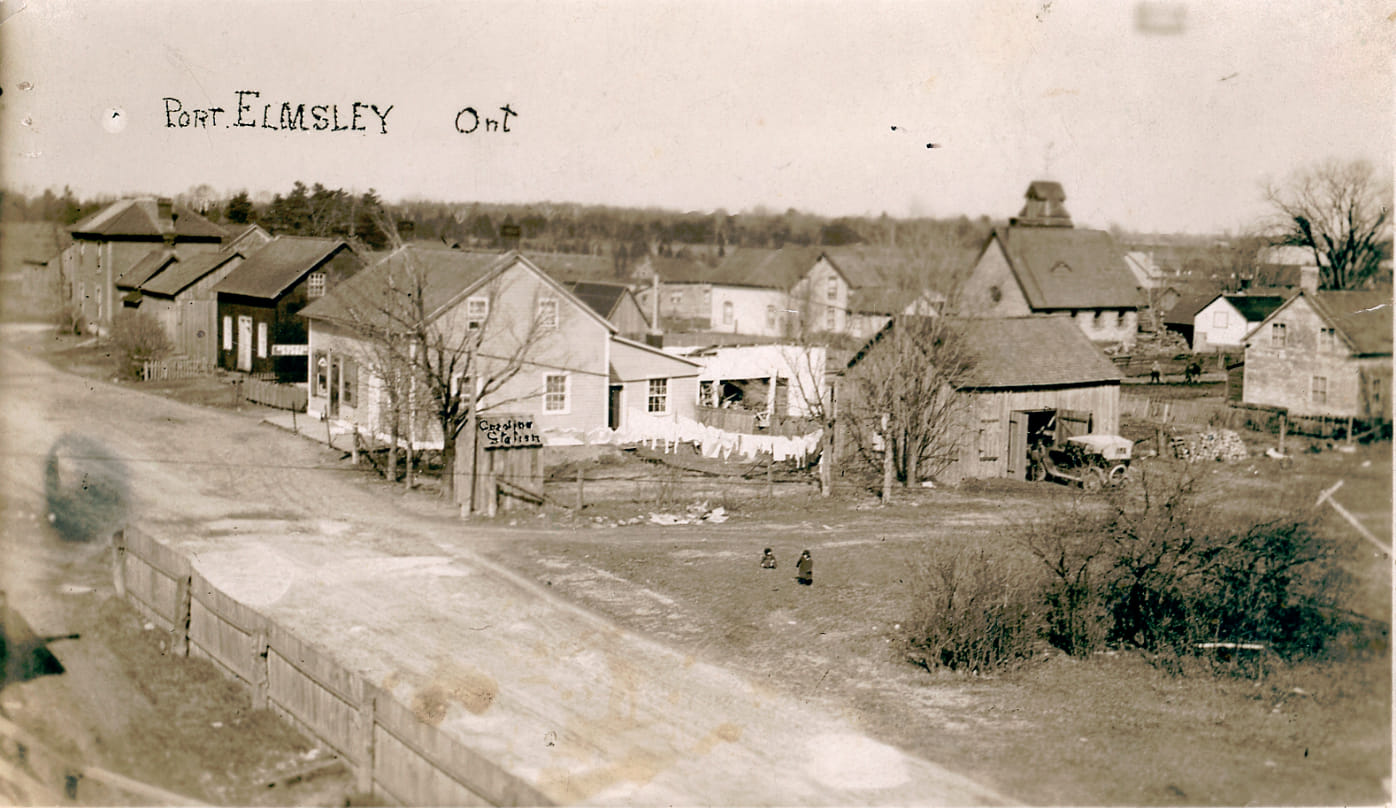
Port Elmsley was first named Barbadoes after the birthplace of Samuel Weatherhand, son-in-law to Benedict Arnold.
More than 13,000 acres were granted to the famous General for his defection to the British army. Weatherhead saw great potential in Port Elmsley and began the industrial growth of the area. At some point Barbadoes was renamed Pike’s Falls after the river that ran through the area, which is known as the Tay River today.
By mid-to late-century, the village boasted two hotels, three stores, two blacksmiths shops, two churches, a cooperage, a post office, a school, a railway station, a Town Hall, and several mills. With the development of the town of Perth it made sense to invest in a canal to transport goods and travelers up the river to Perth. The Tay Navigation Company was formed and five locks were built to help barges maneuver the rapids, evidence, of which, remain today.
With the building of the Rideau Canal, the little locks in Port Elmsley were left to deteriorate as a newer canal was built at Beveridges Bay providing a more direct route to Perth.
MABERLY

Picture taken after 1885, as the Methodist Church (now the UnitedChurch) in the picture was not constructed until that year. Also visible are a mill, library, a dance hall and a hotel.
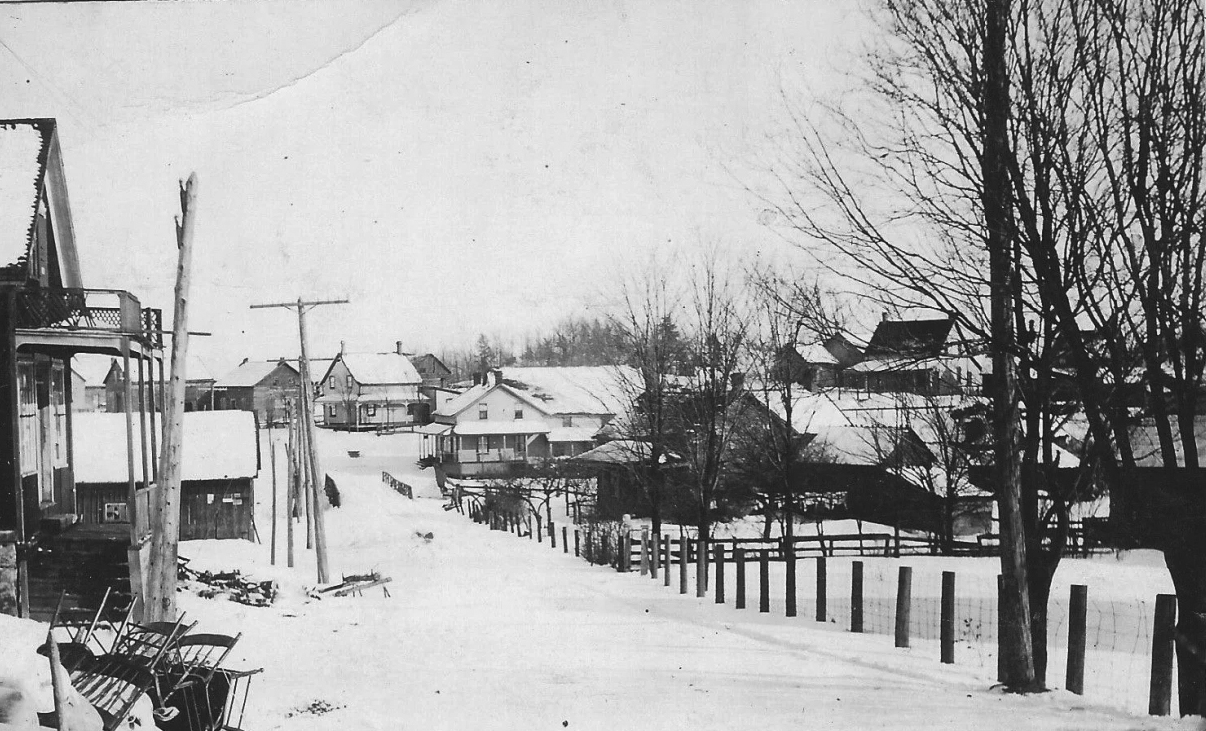
CLAYTON
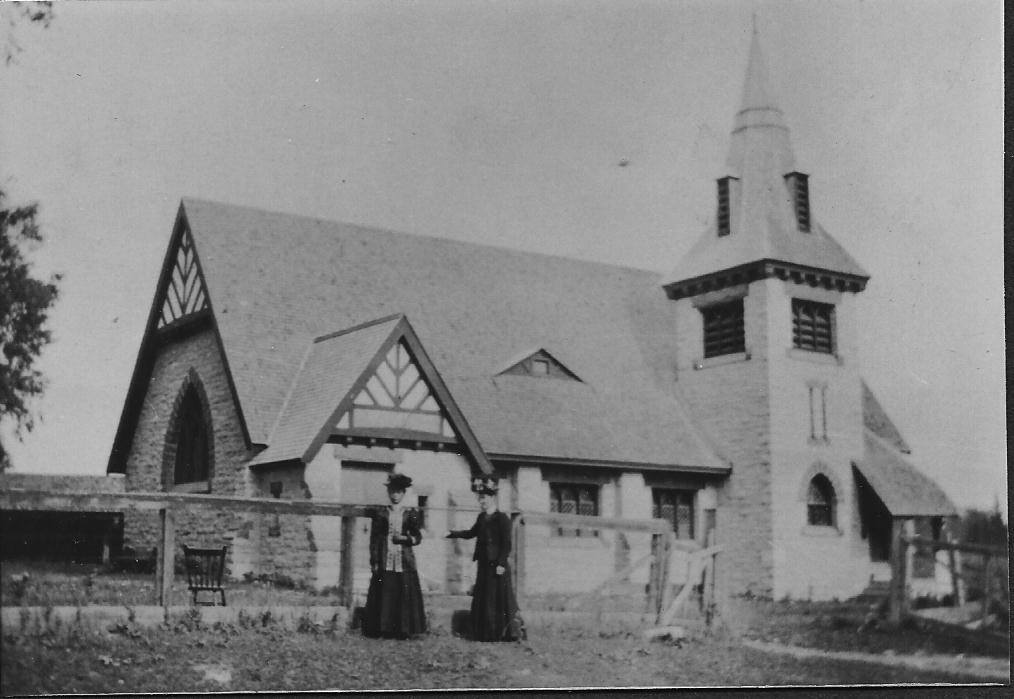
St. George’s Anglican Church opened in 1901
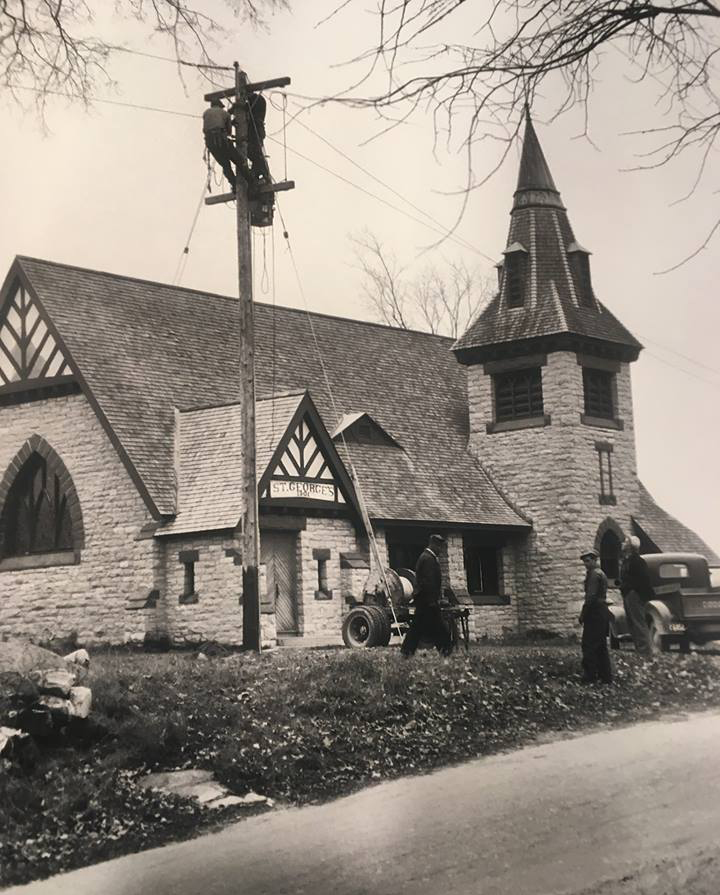
Installation of hydro in Clayton in 1948. Photo: Clayton Ontario History FB page.
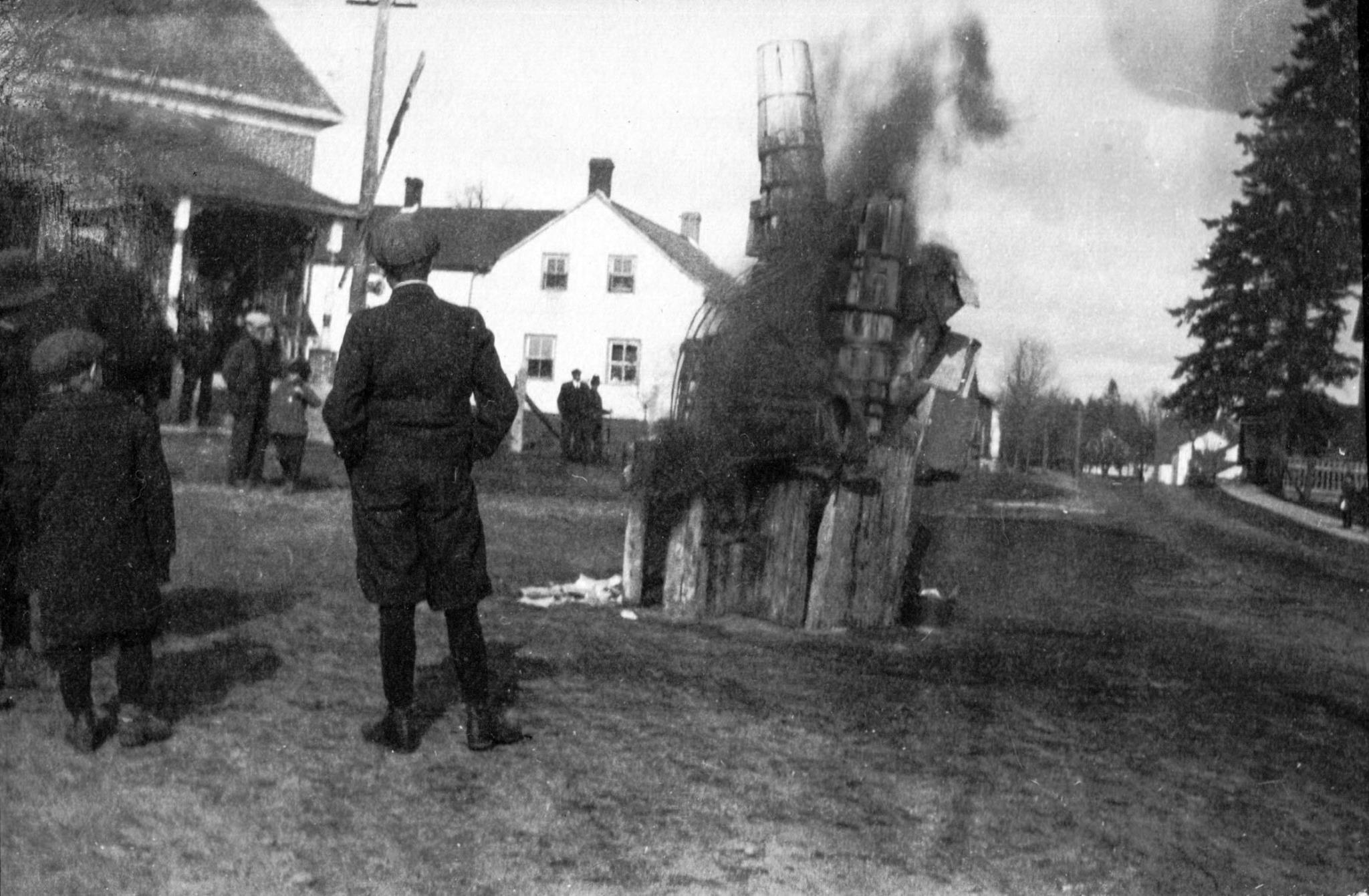
End of WWI celebration in Clayton. Photo: Clayton Ontario History FB page

Clayton Saw Mill

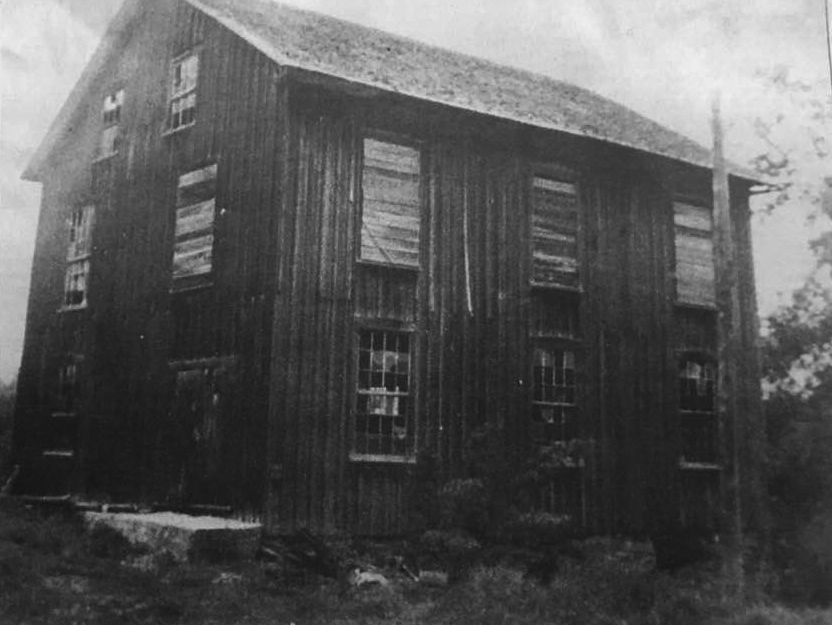
Clayton Grist Mill – Photo taken 1955
INNISVILLE
Innisville was originally named Freer’s Falls or Freer’s Rapids after Captain Noah Freer, a veteran of the War of 1812 who received a deed from the Crown in 1821 for all of Lot 20. The village was later named Ennisville after James Ennis who had the first mill there. Ennis would come to Canada in the spring, work the land, and return to Ireland for the winter. When the post office opened in 1851 a clerical error resulted in the community being called Innisville. The error was never corrected.
Innisville was a mill town with a huge dam an active woollen mill, sawmills, shingle mills, two flour mills and a grist mill. As well there were a couple of taverns, a hotel (which housed the general store and post office), blacksmiths, cooper and shoe shops, a school and at least one church and community hall. Eventually the mills disappeared and the village became quite a resort town. Some of the original cottages are still in use.
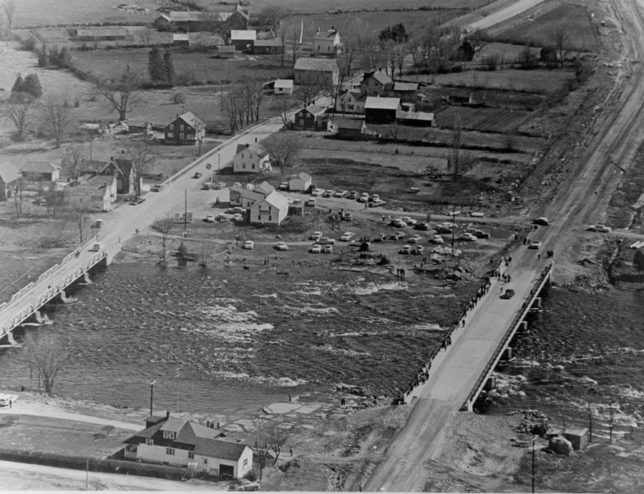
This aerial view of the south side of the village taken in 1959 shows the current Highway 7 being built. Prior to that the highway went right through the village and had to cross the one lane bridge. Photo Nancy Hudson
FRANKTOWN
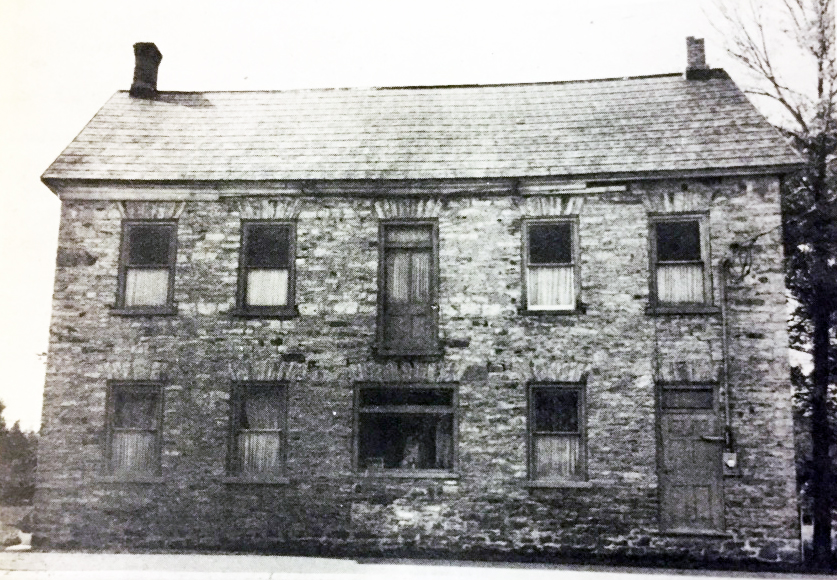
The former hotel in Franktown. The now quiet village once had three such establishments which provided accommodation, food and drink for travellers between Perth and Bytown (Ottawa).
This Irish-Scotitish settlement was founded in 1821and was named after Colonel Francis Cockburn. In it’s heyday the village had three hotels, (Pierce’s, Loney’s and Hughton’s, a blacksmith shop, two sawmills that ran day and night because of the demand for lumber, a cheese factory, a tailor shop, a furniture shop and even a jail. There were two churches, St. James Anglican one of the oldest in the county, a school and two doctors.
DEWITT’S CORNERS
GLEN TAY (ADAMSVILLE)
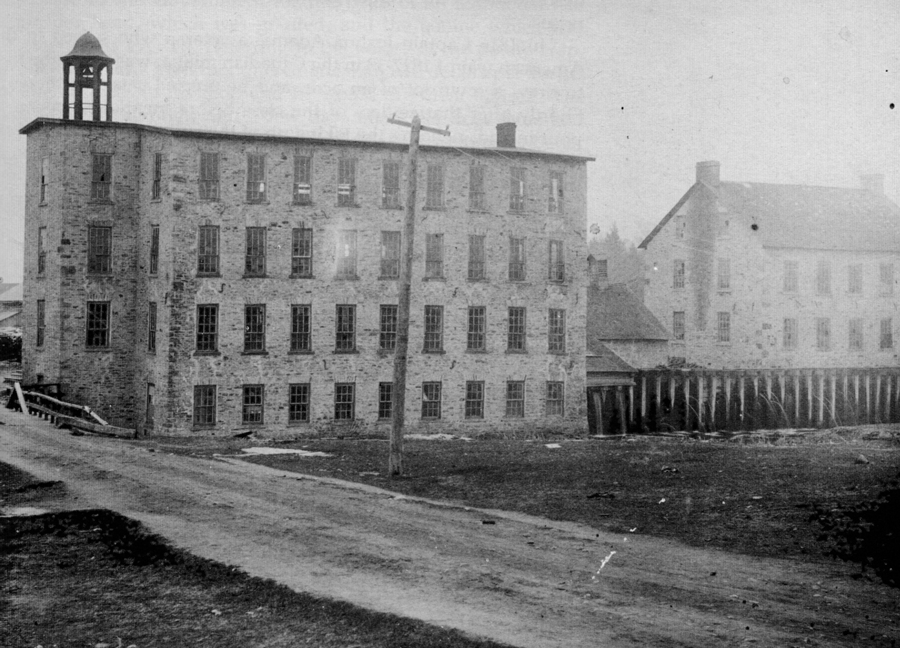
Captain Joshua Adams’s Mills, Glen Tay- c. 1895, by W.H. McIntyre. Period textile mill operatives at settings such as this found then lives constrained by a new regimen that forced them to work from dawn to dusk. This industrial regimen was enforced by the mill bell (housed in the cupola, upper left) which marked the hours, and by the steady flow of water through the elevated flume (lower right) which produced an unending source of power. Glen Tay for time was known as Adamsville. Perth Museum Collection.

Glen Tay Train Station
LOMBARDY
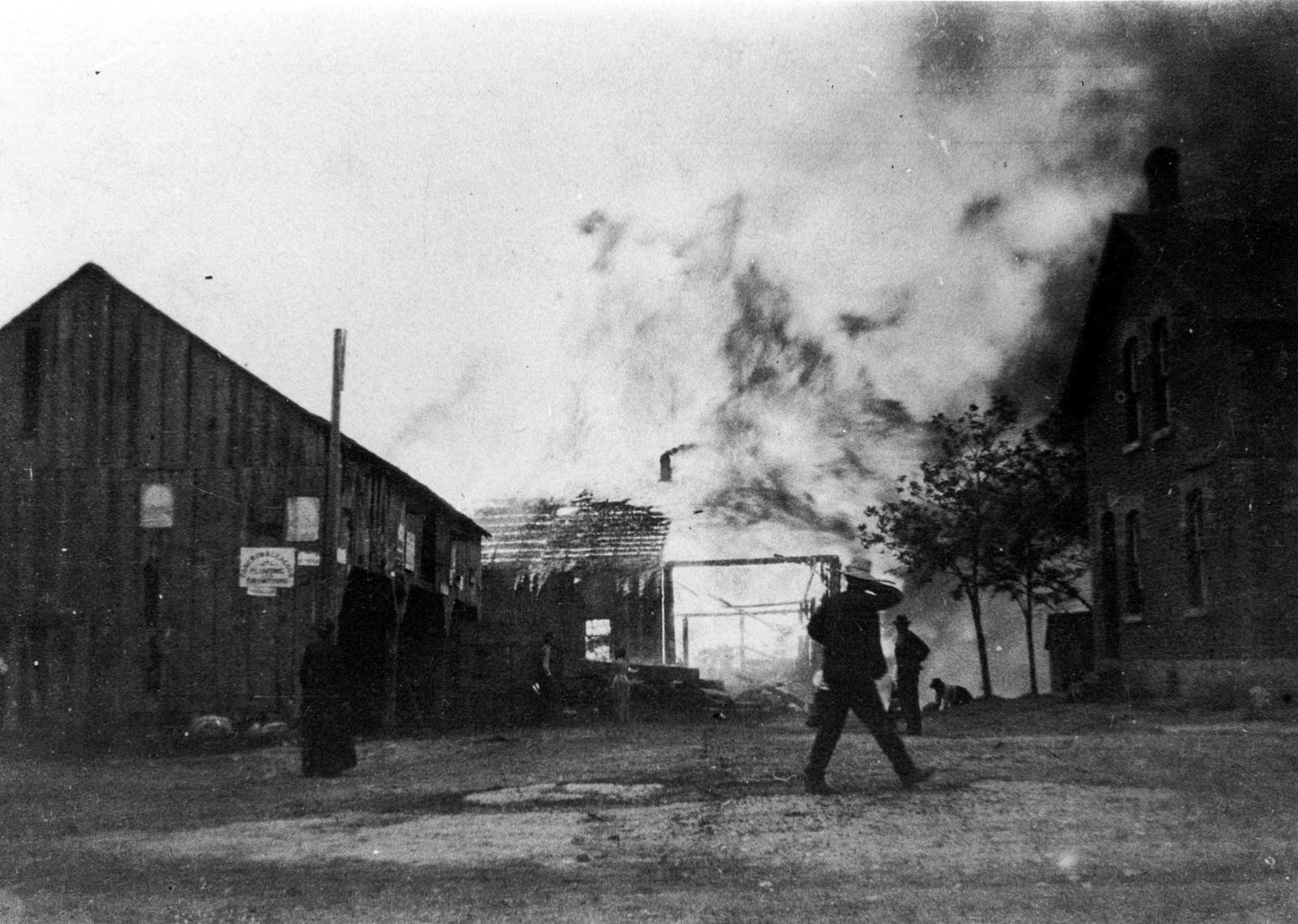
Lombardy’s mills went up in fire in June 1909. John Looby was the foreman; Hiram Crate of Smiths Falls was the owner. Photo: Lanark County Genealogical Society
SNOW ROAD
